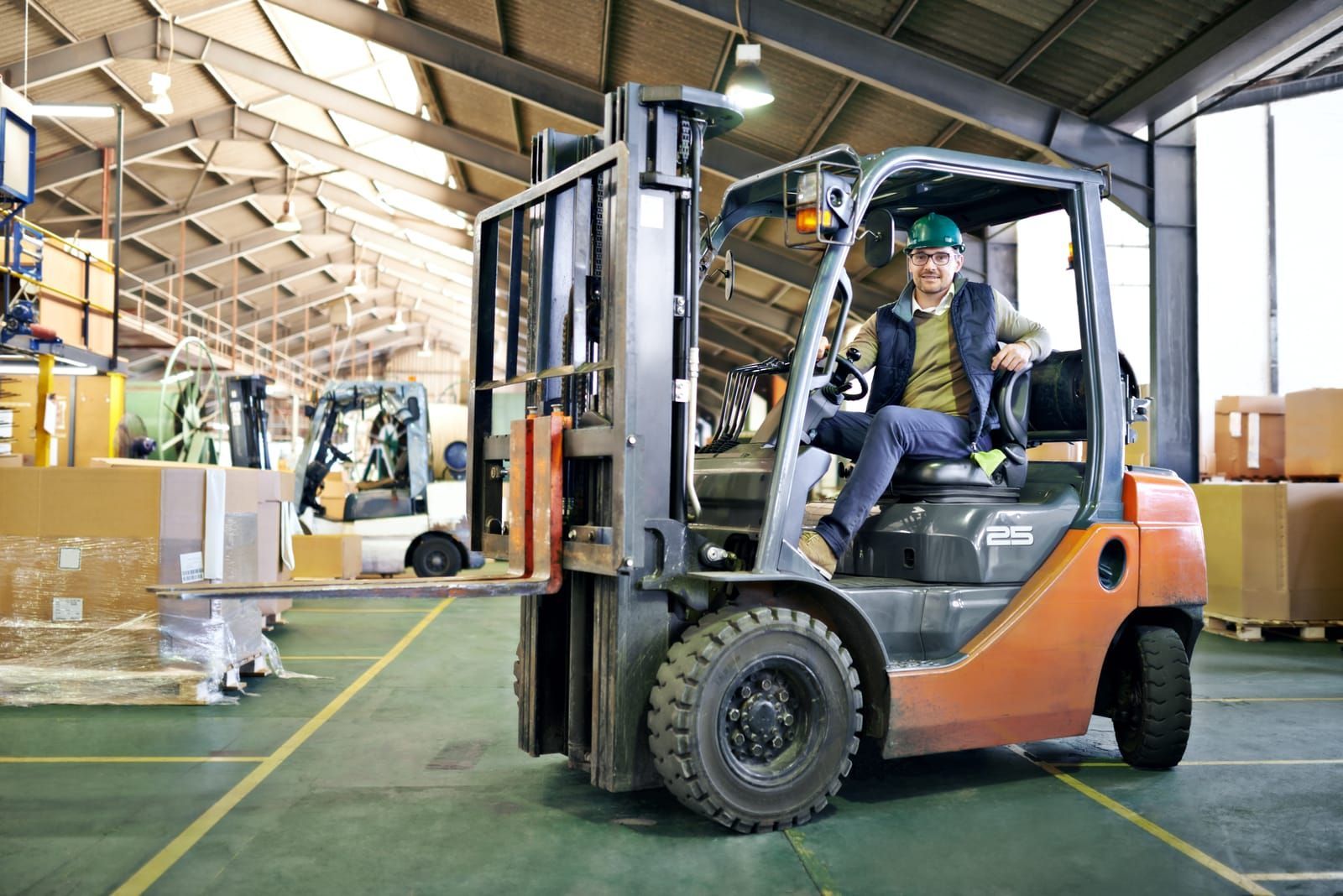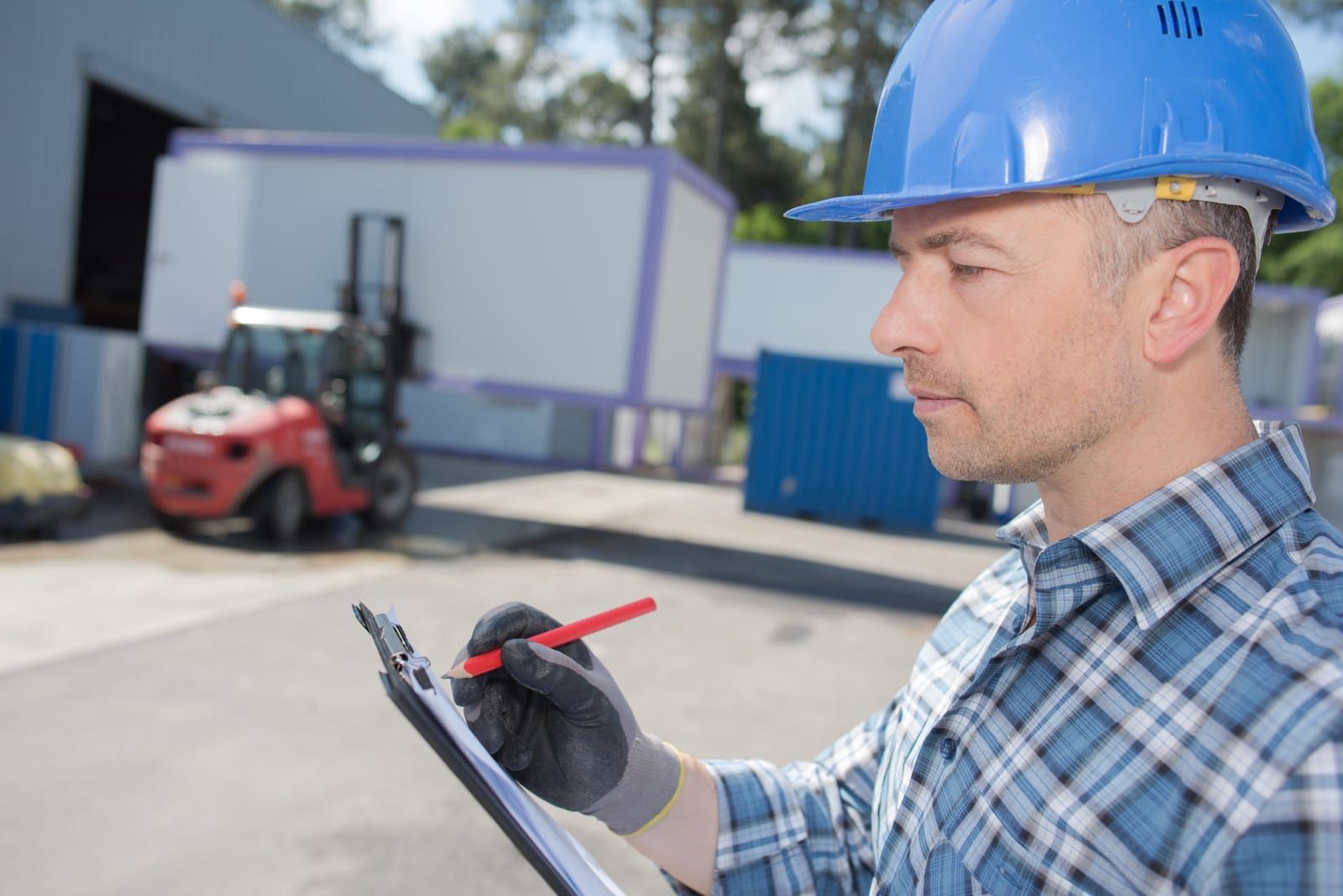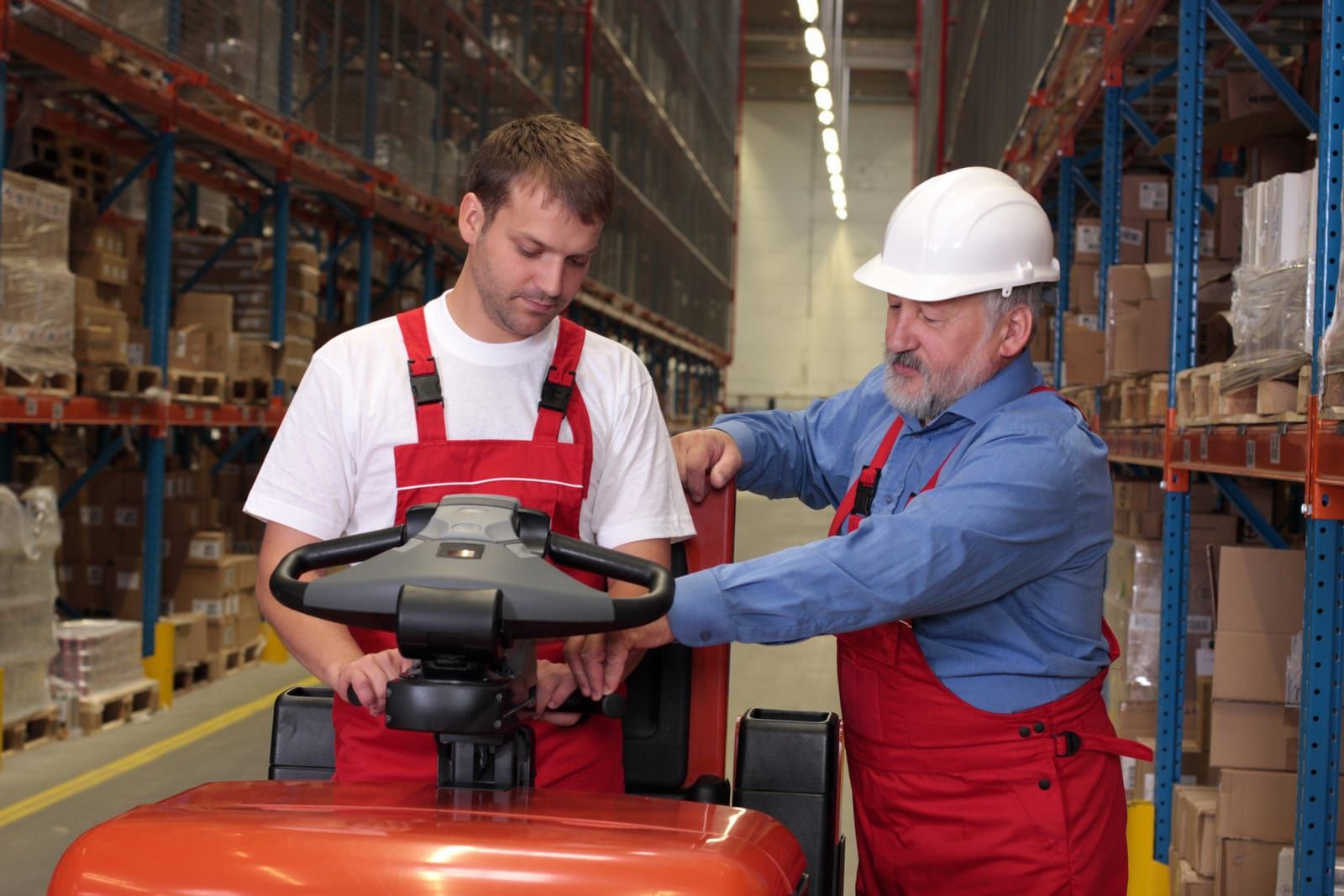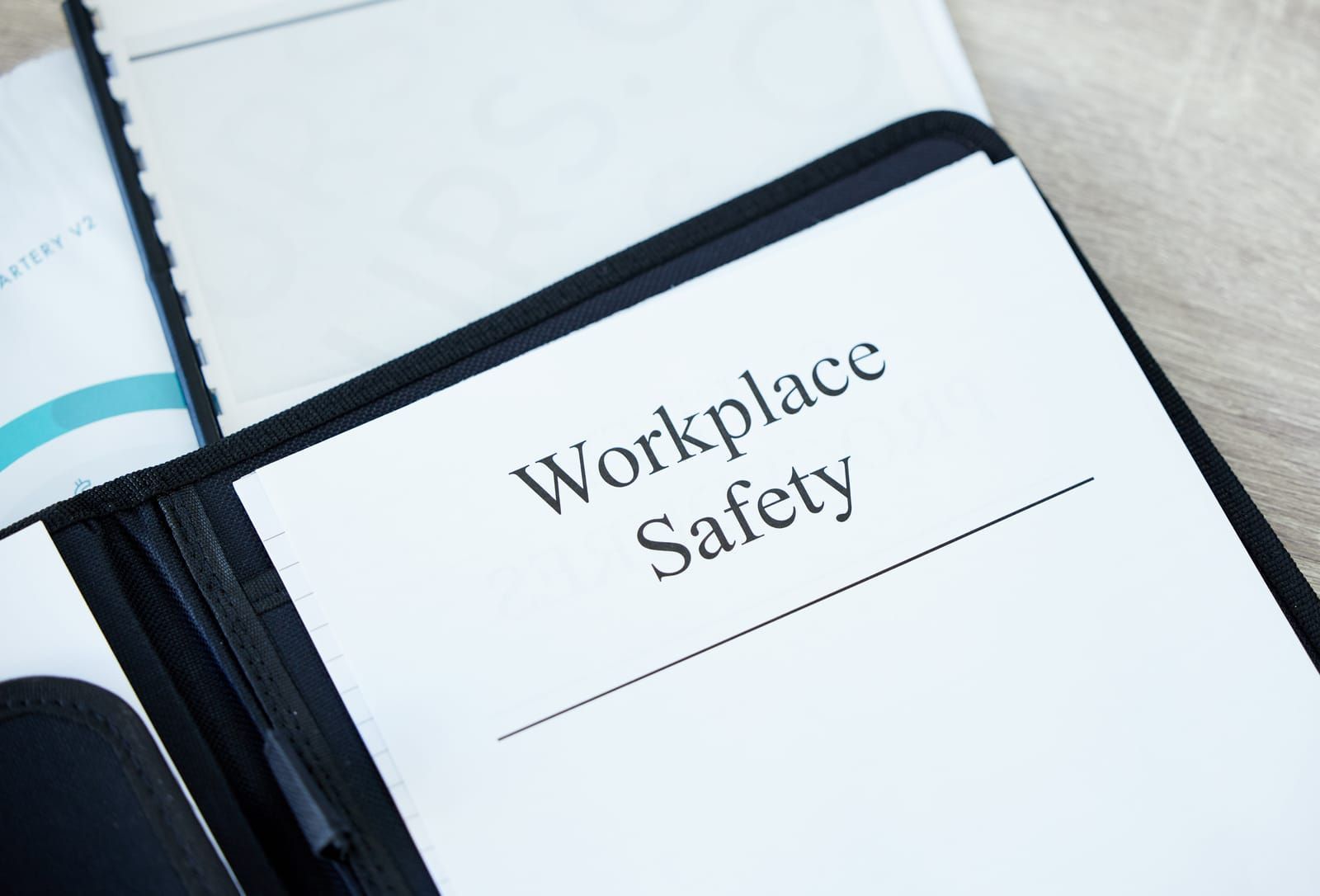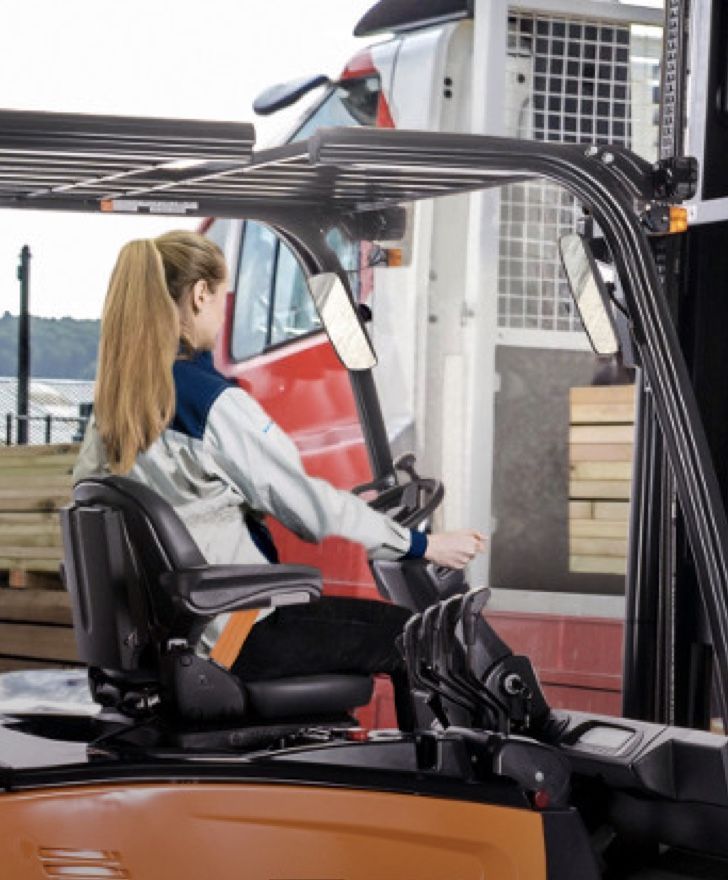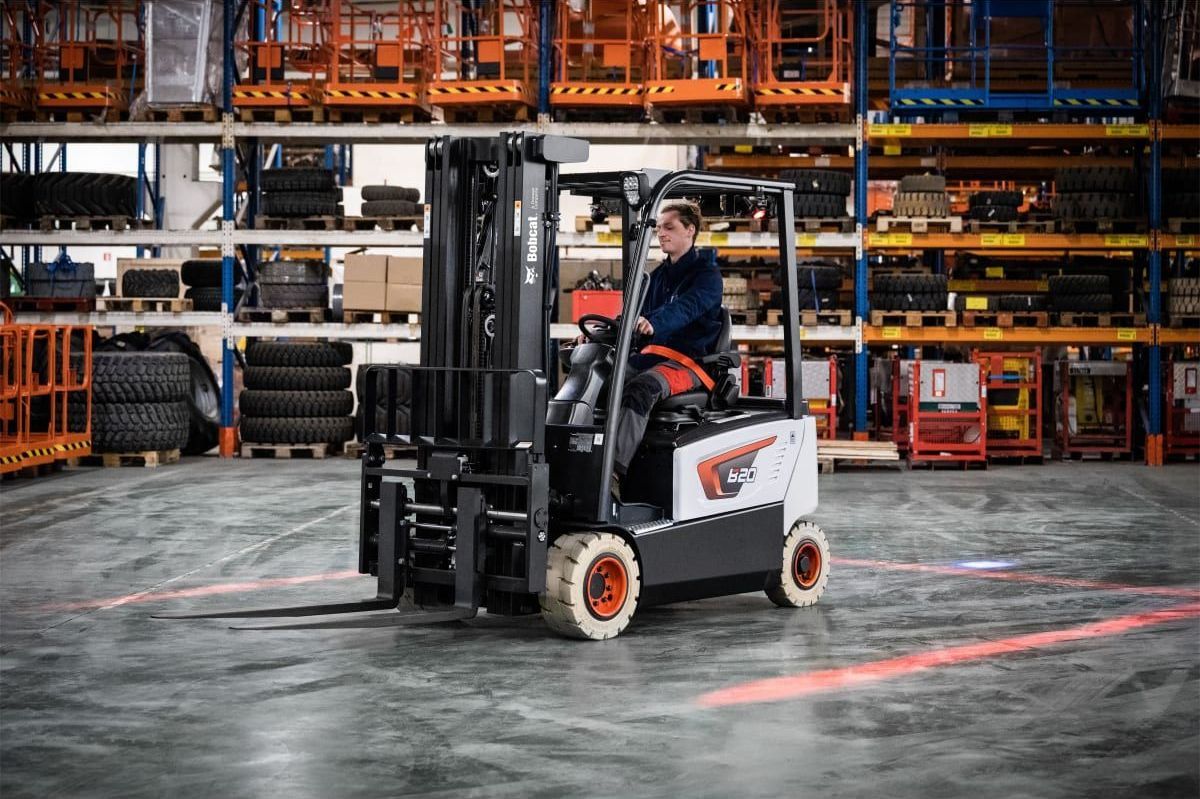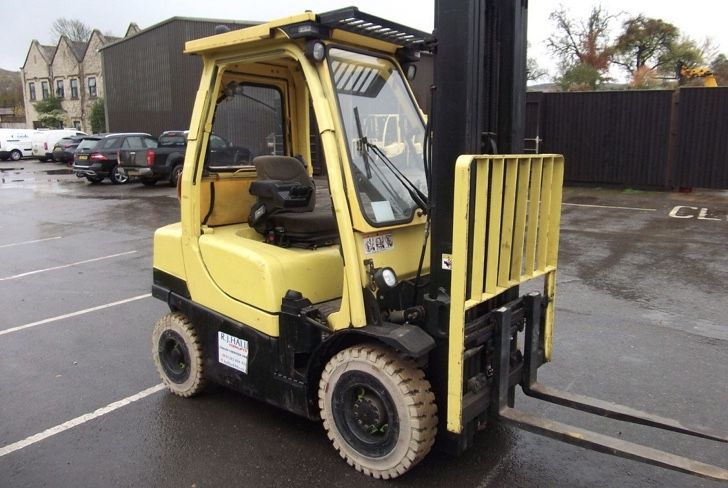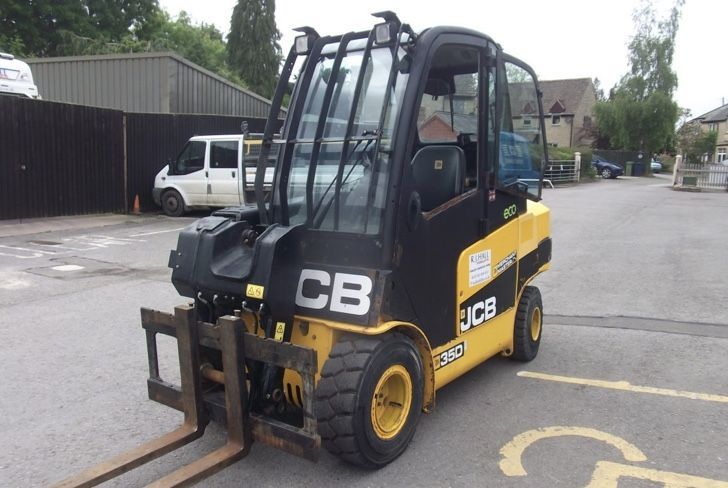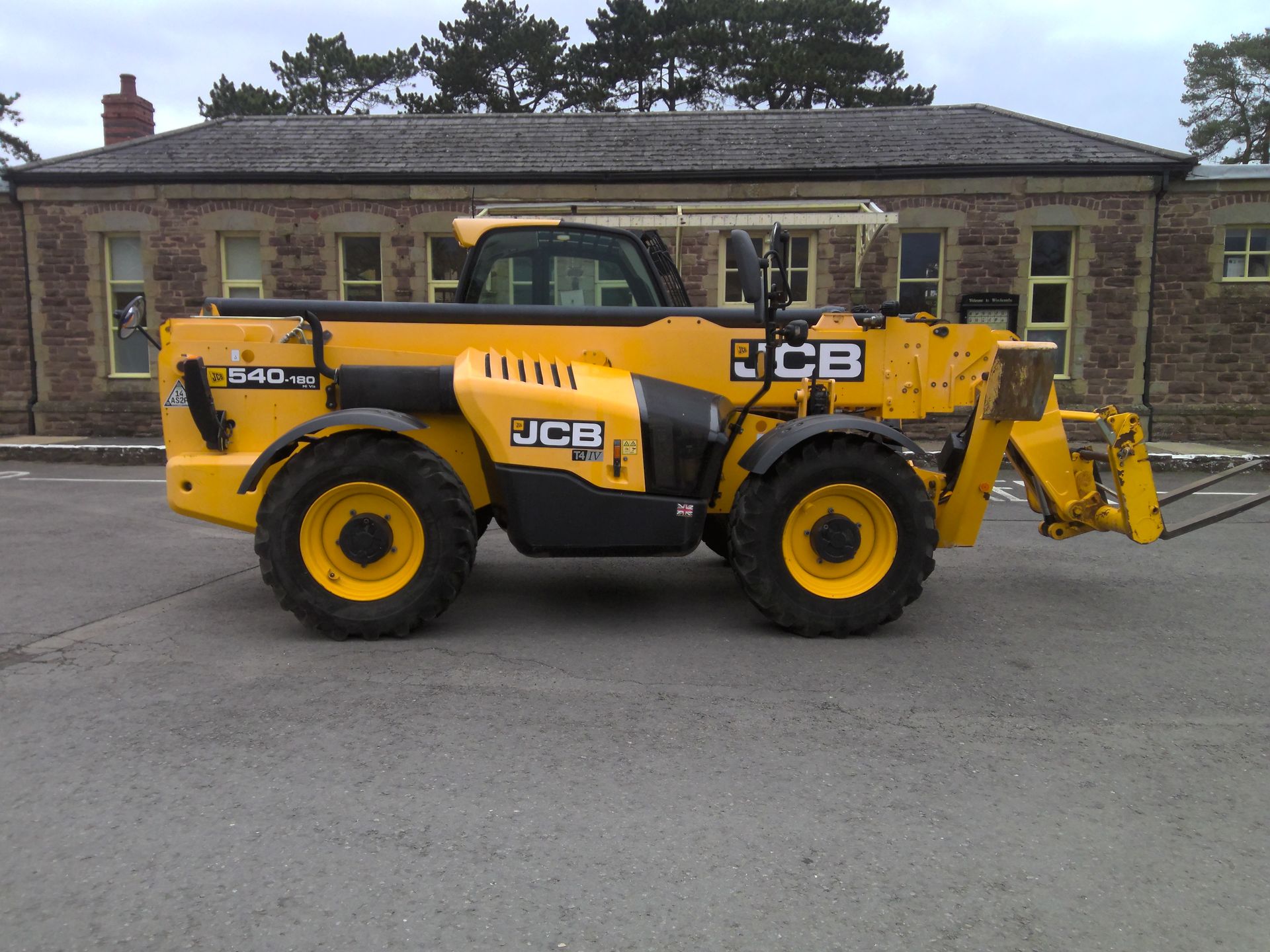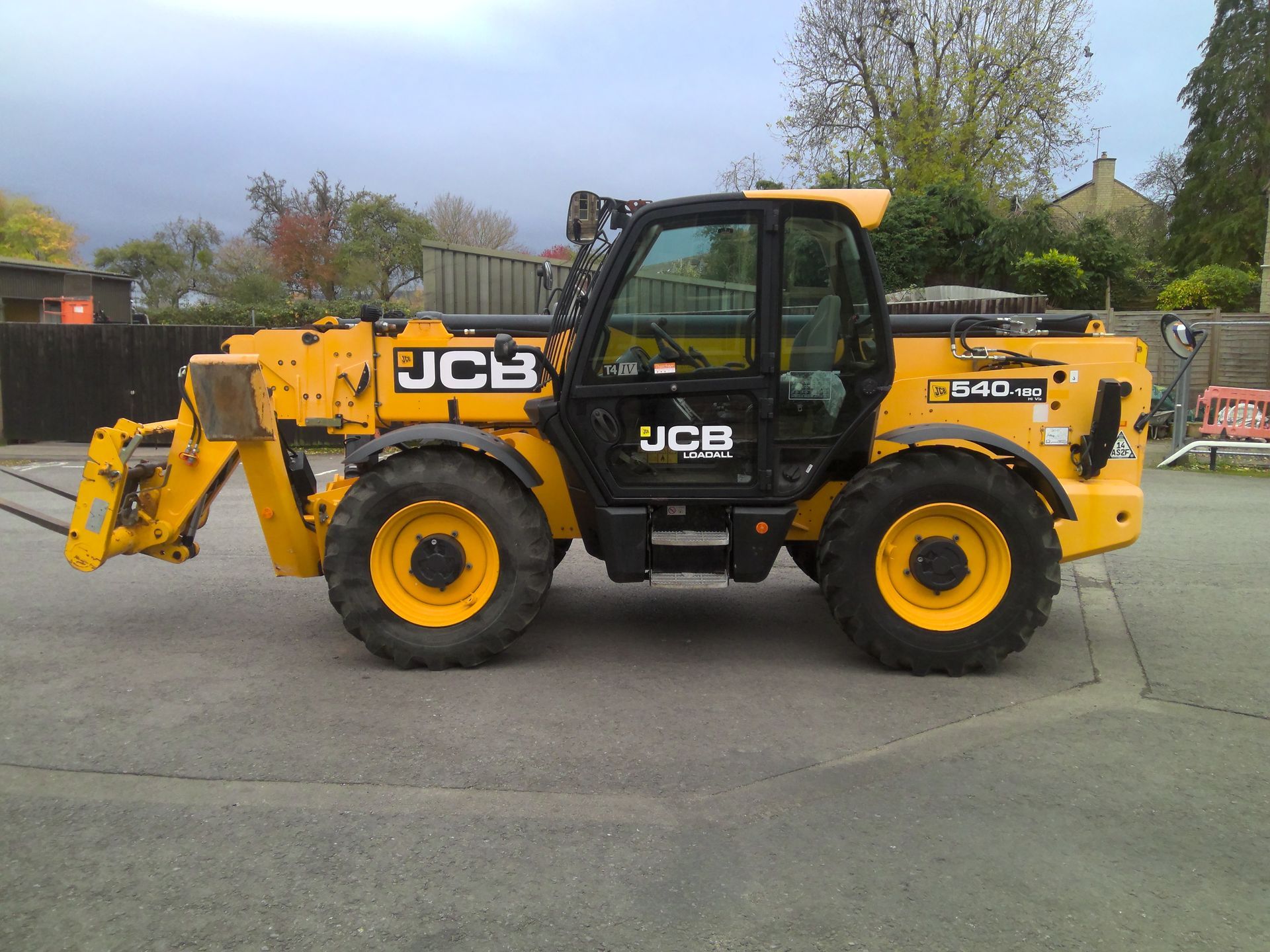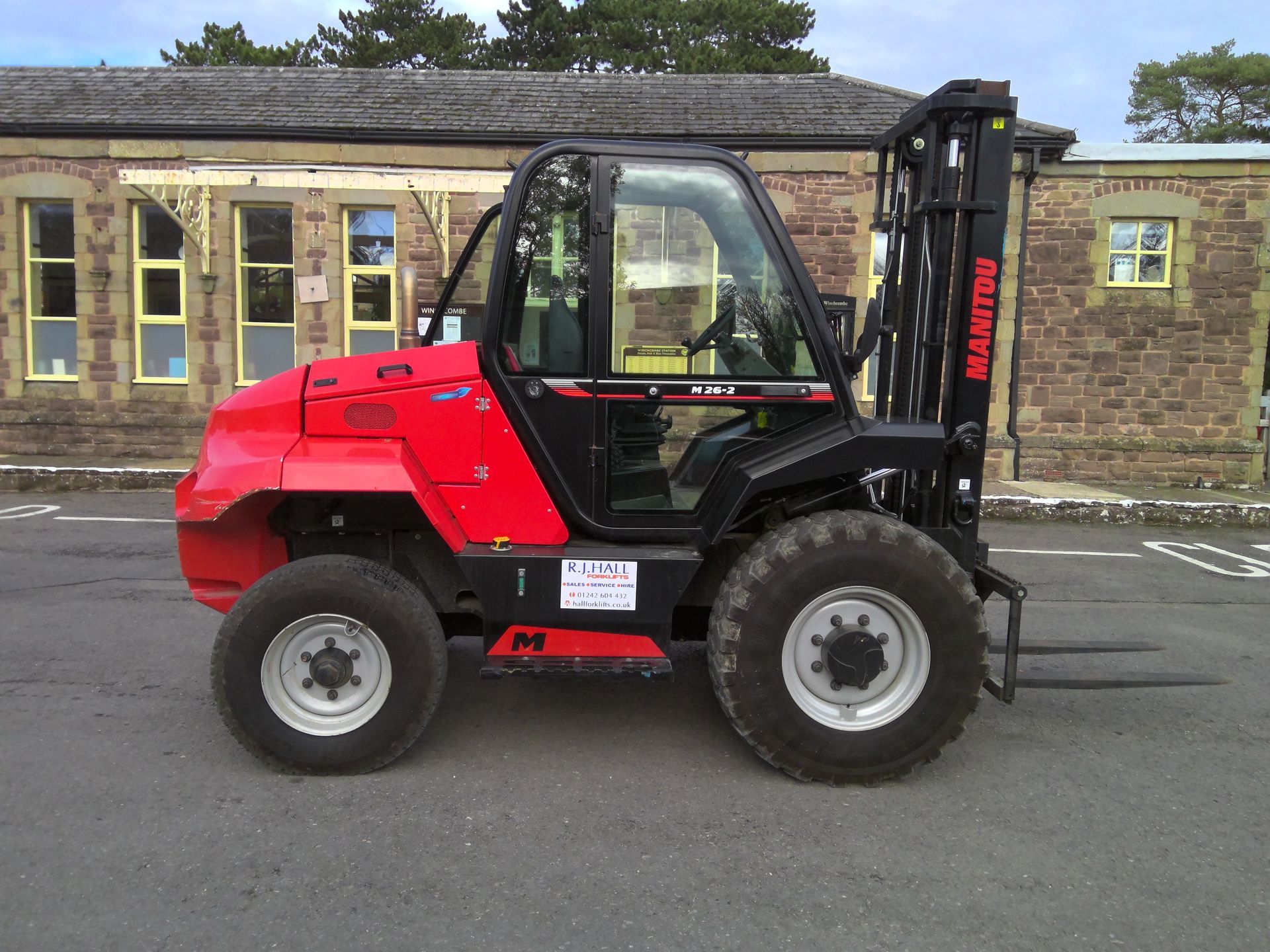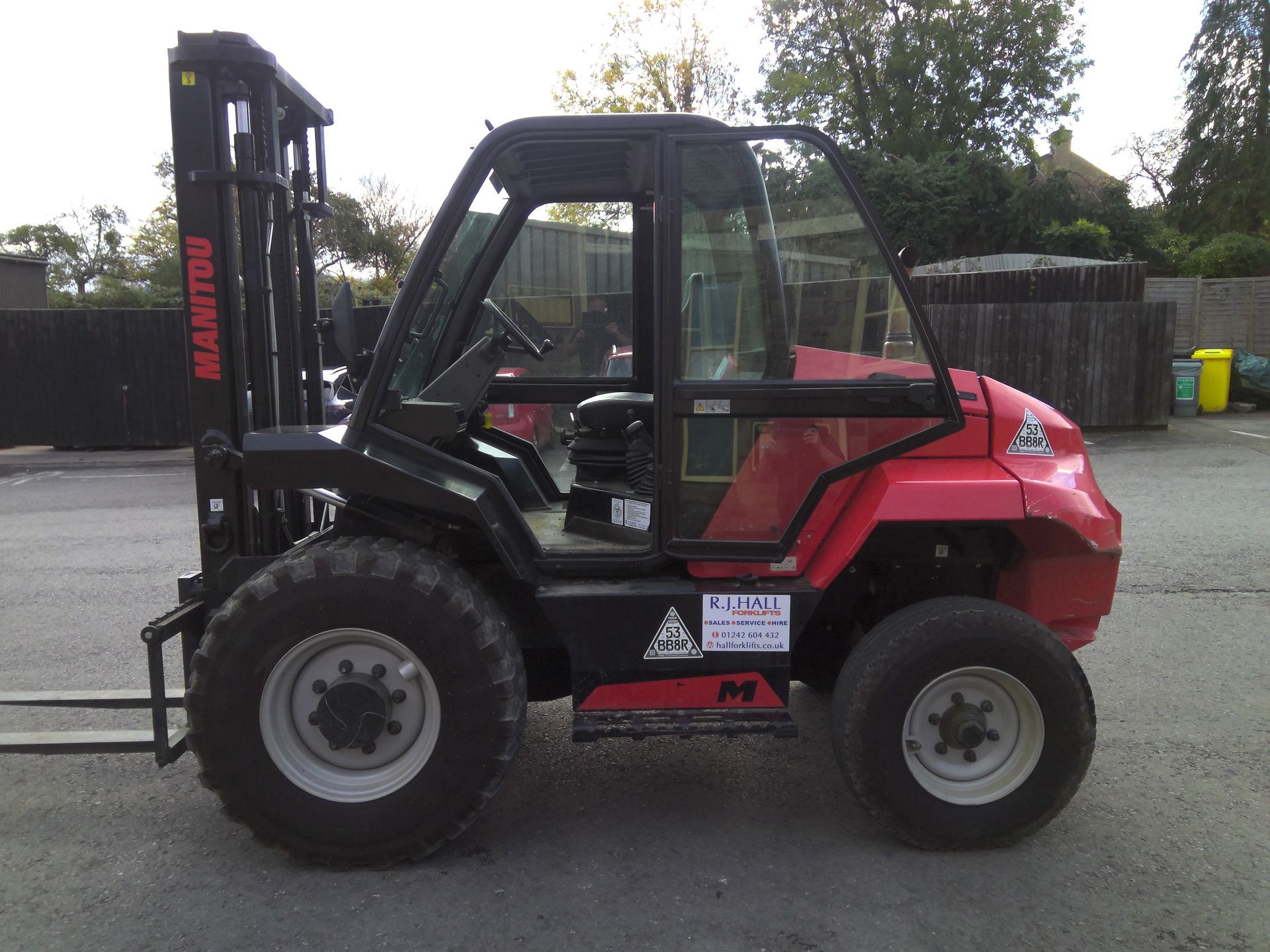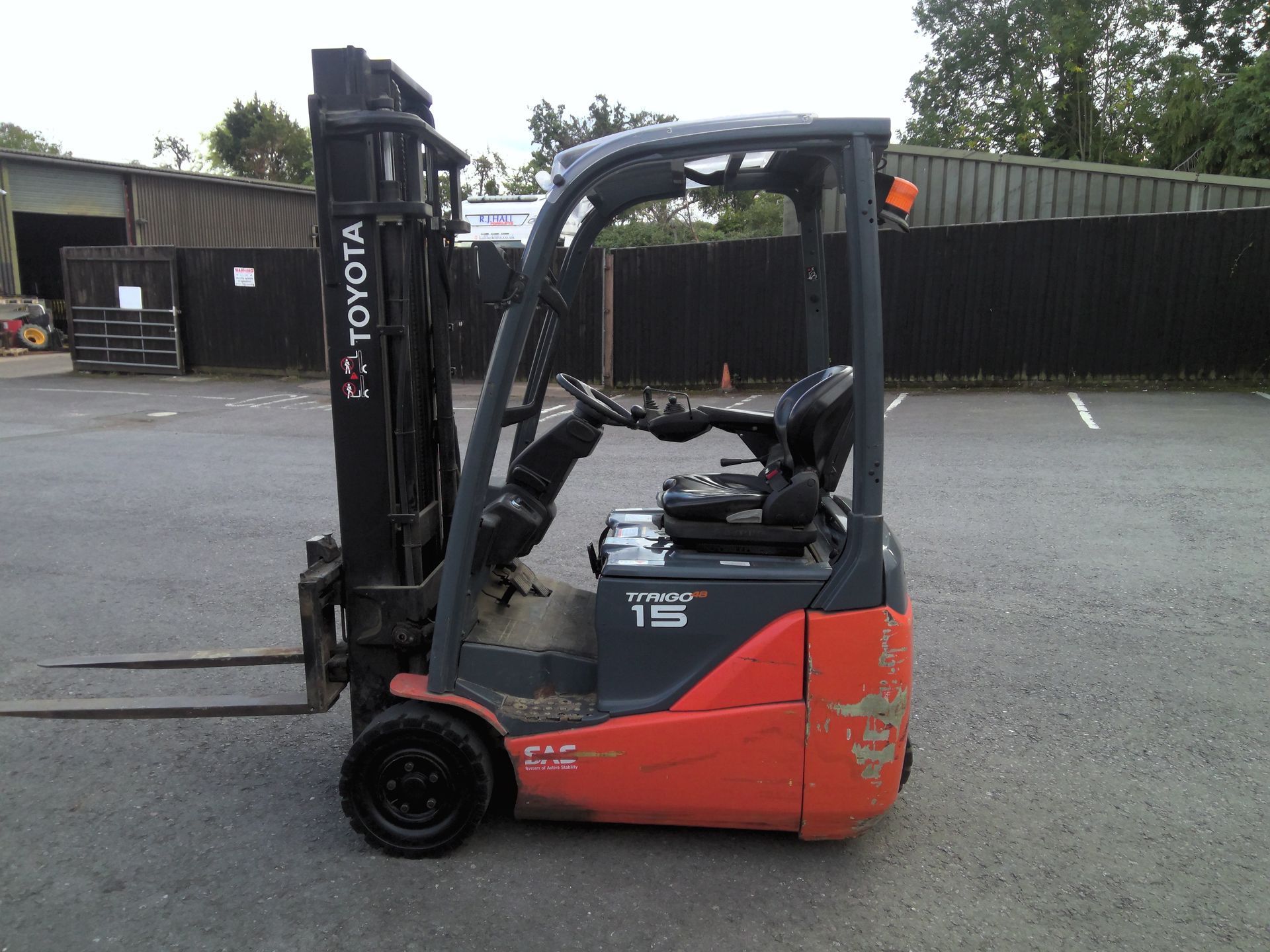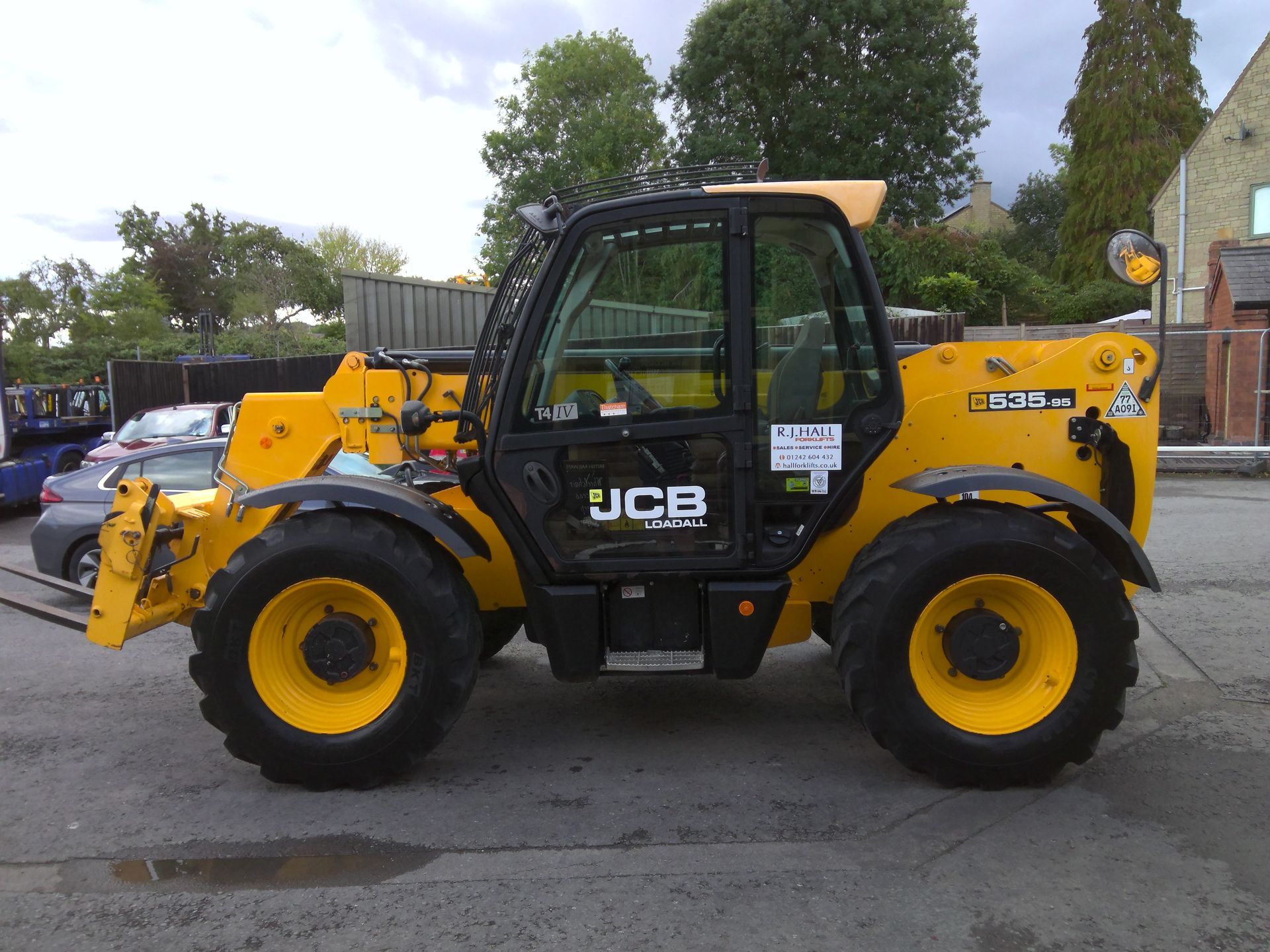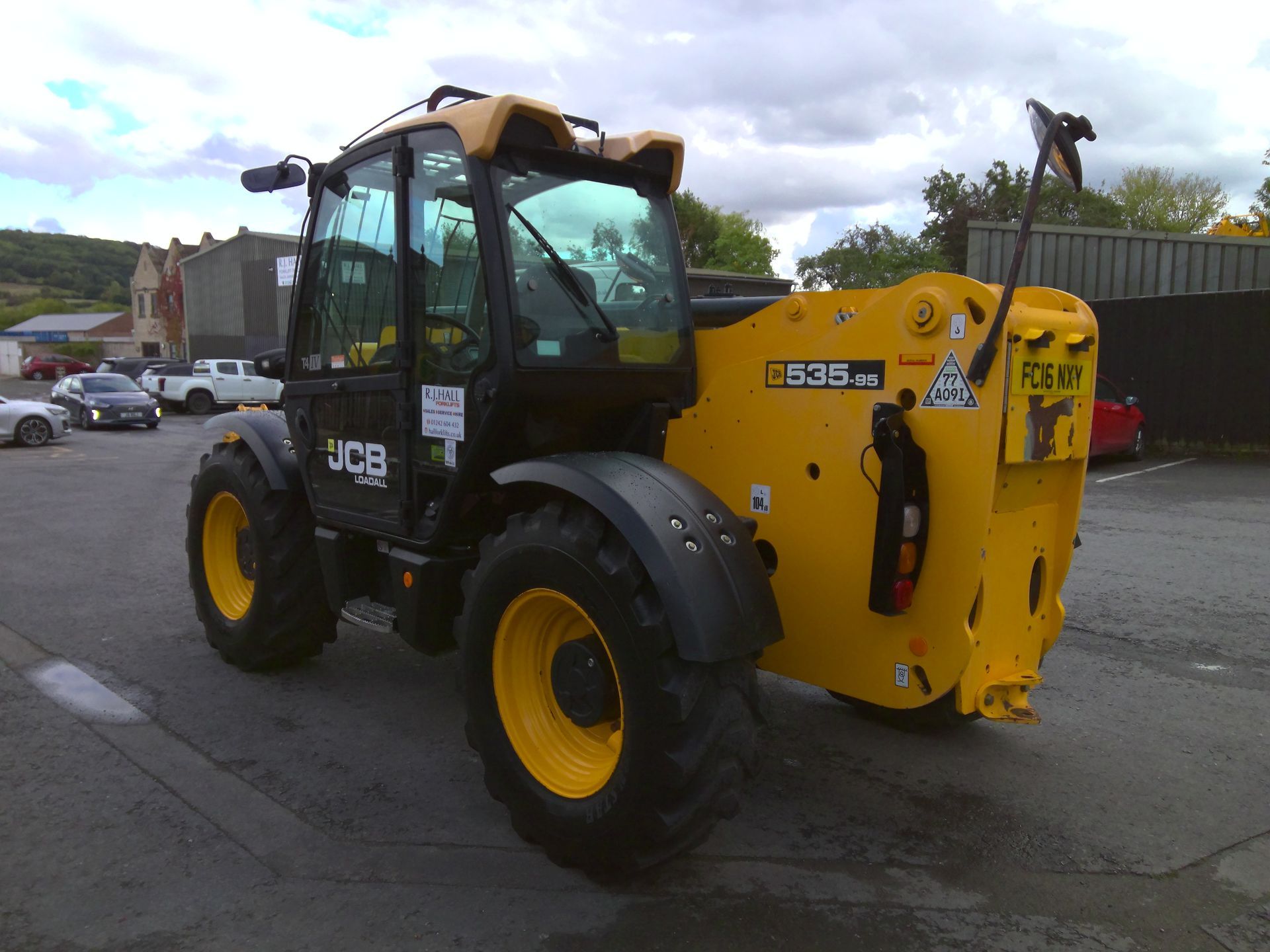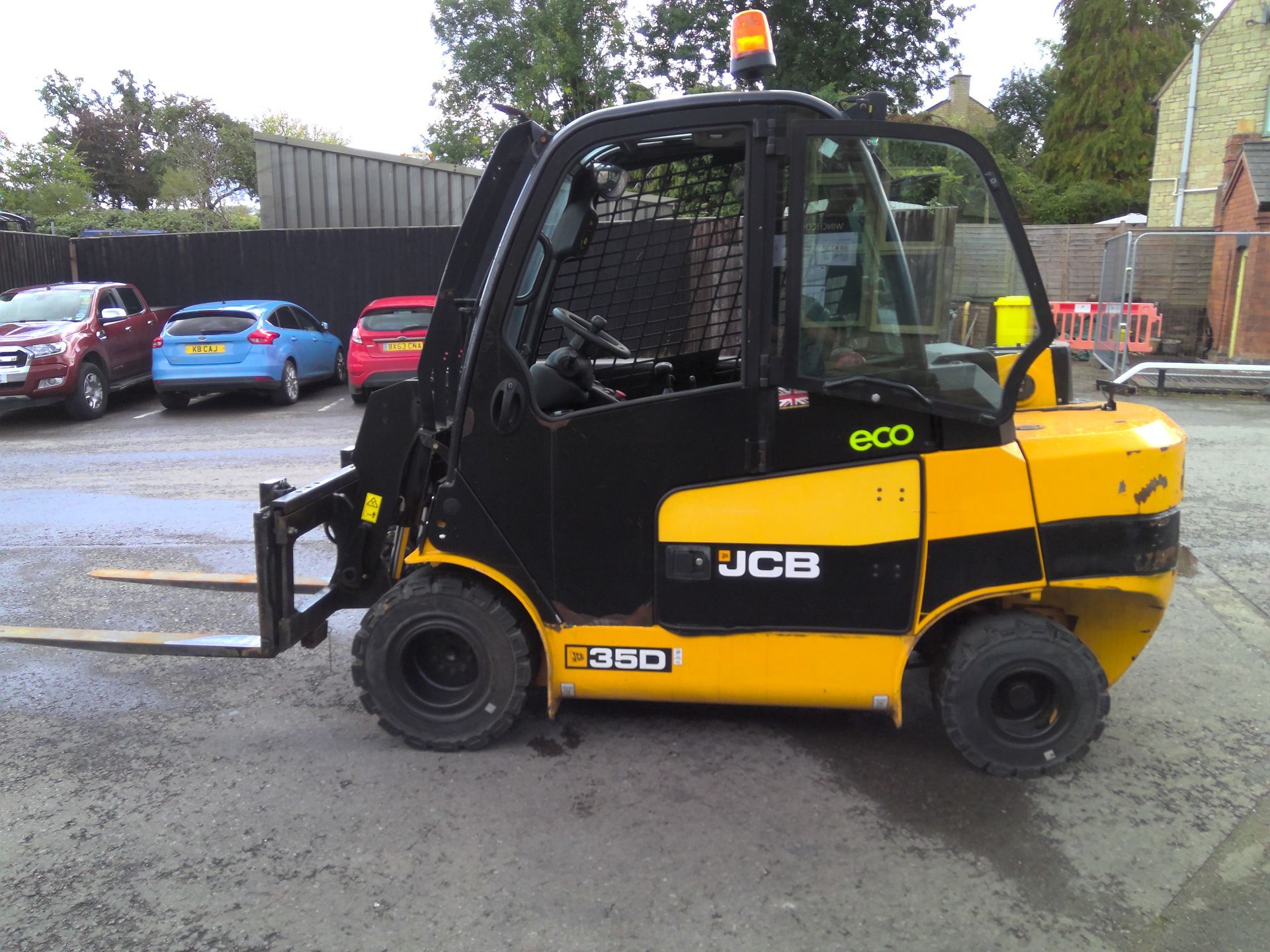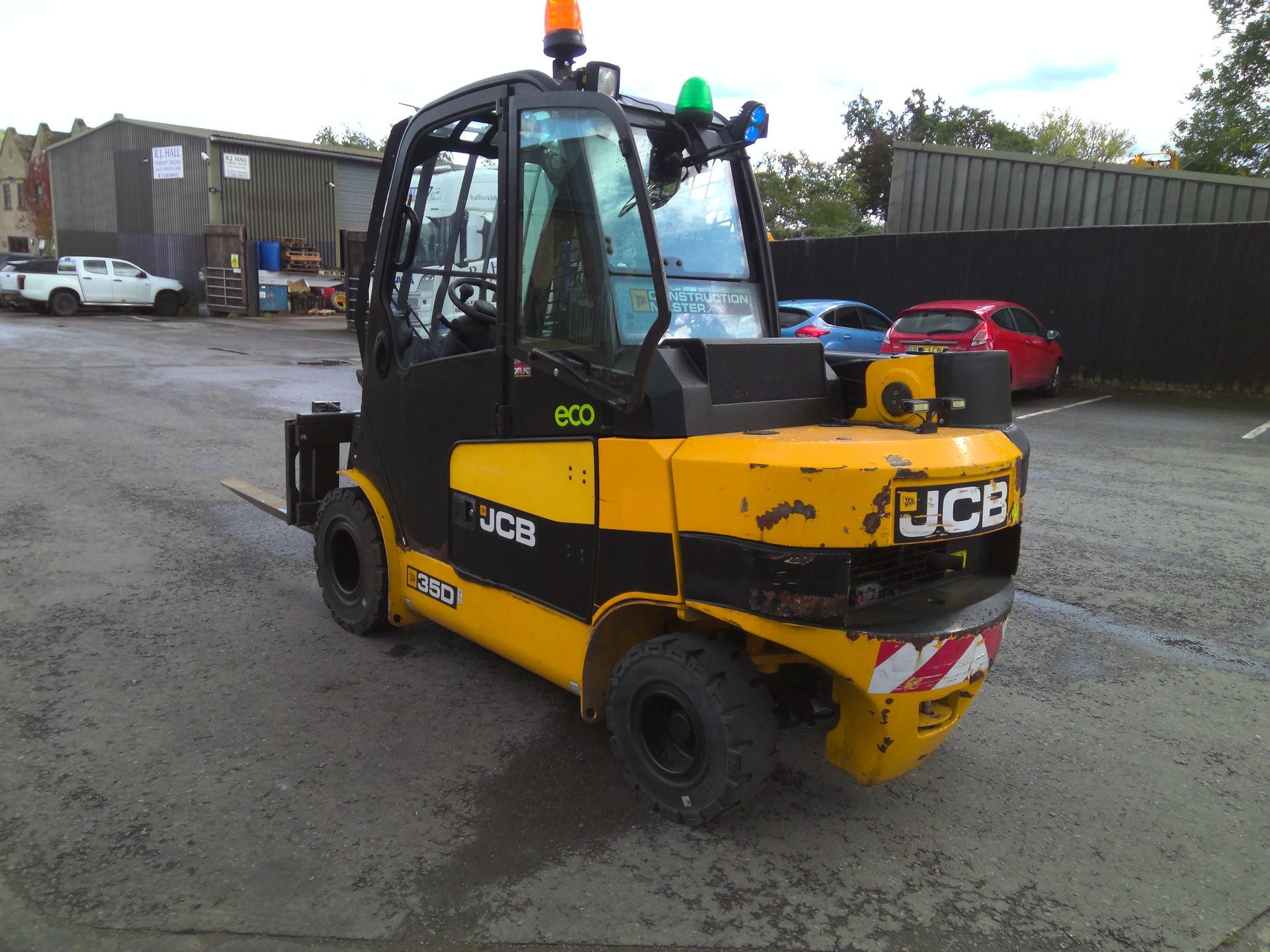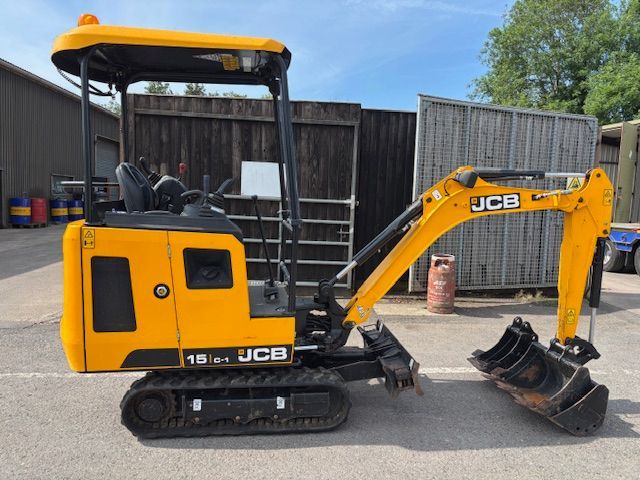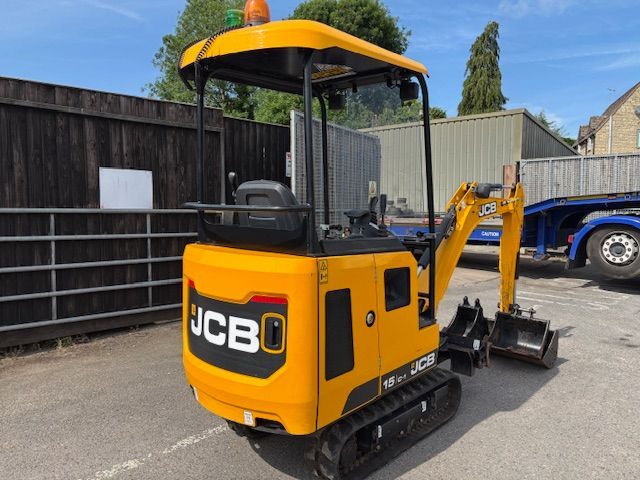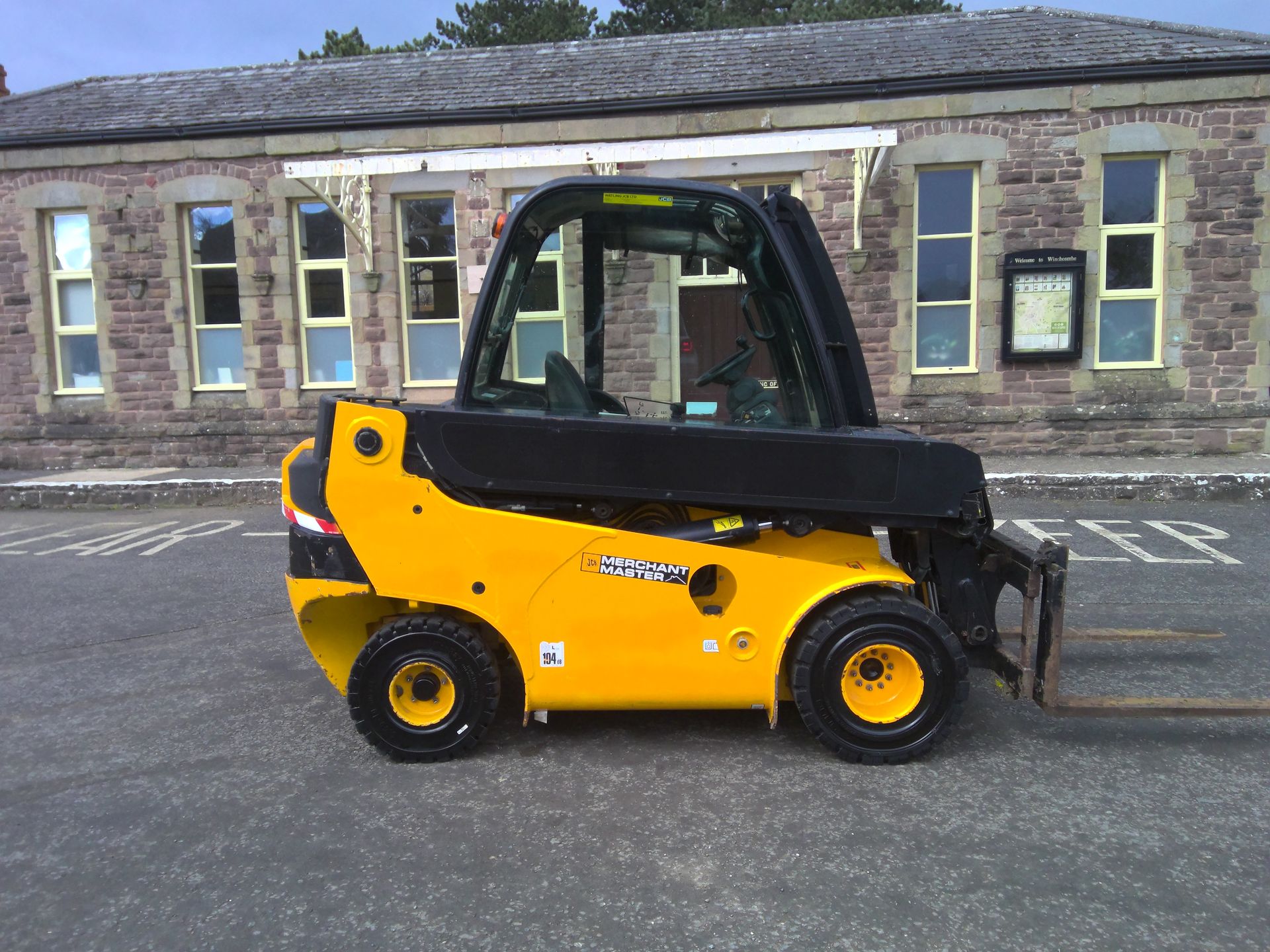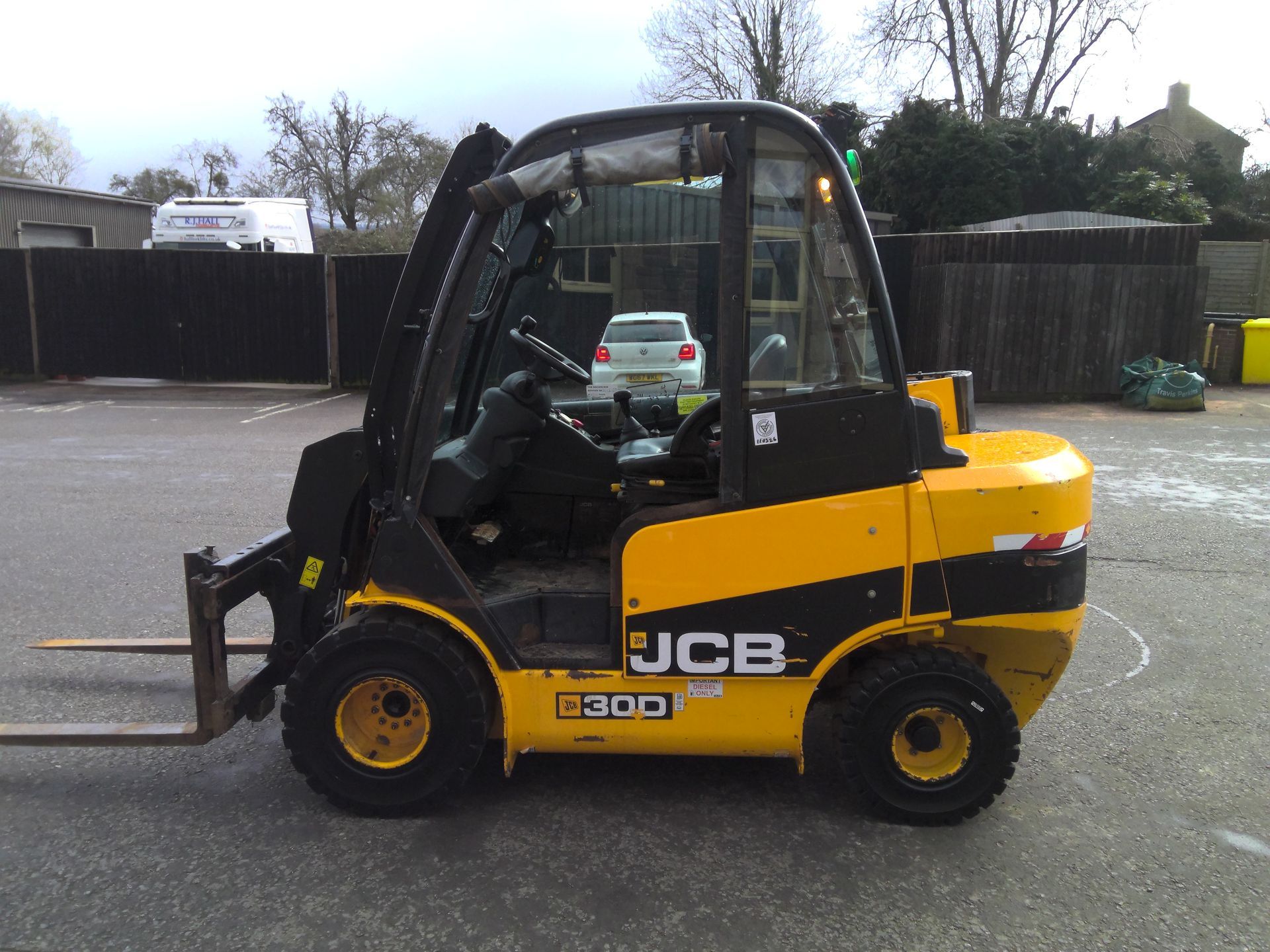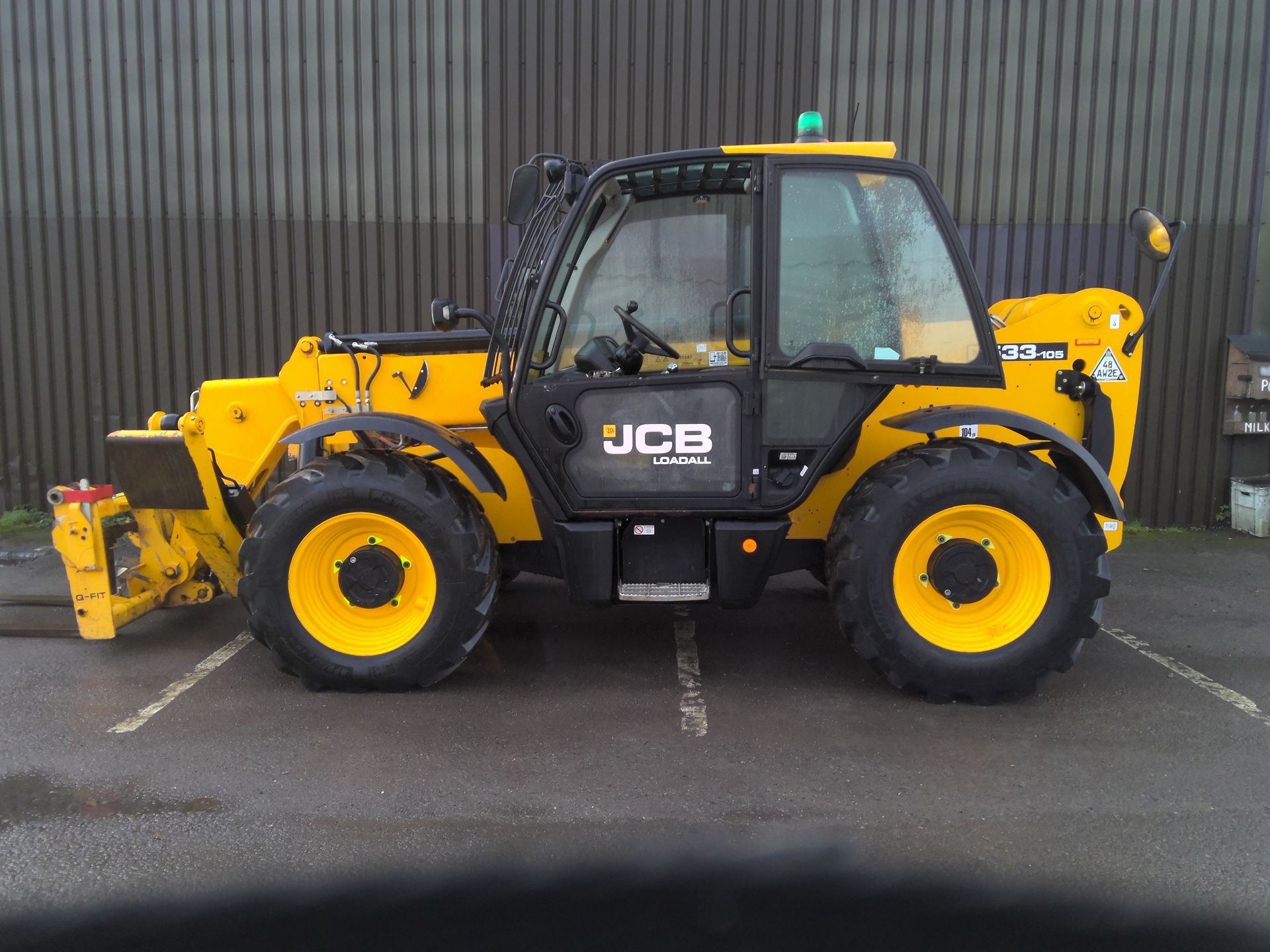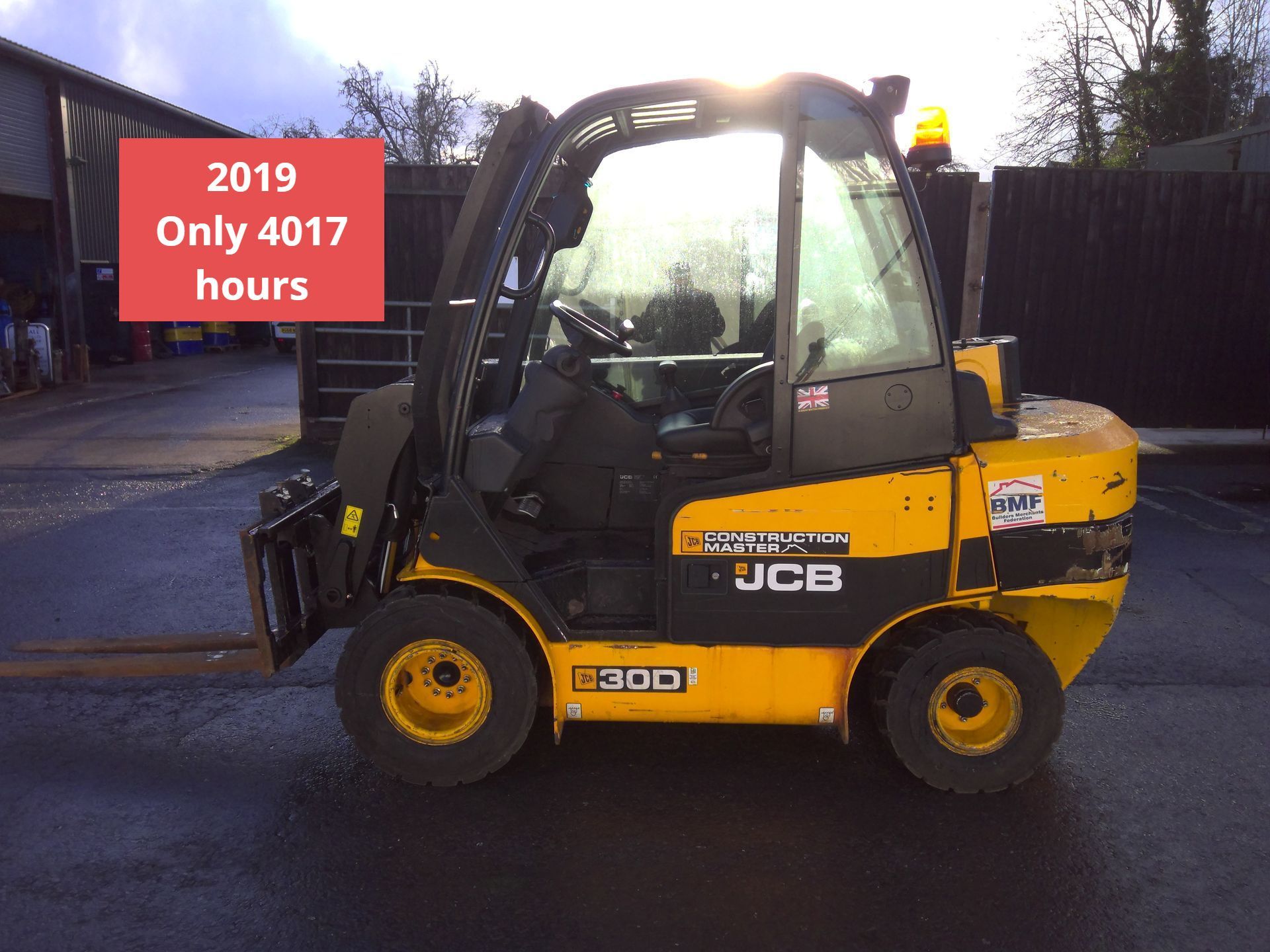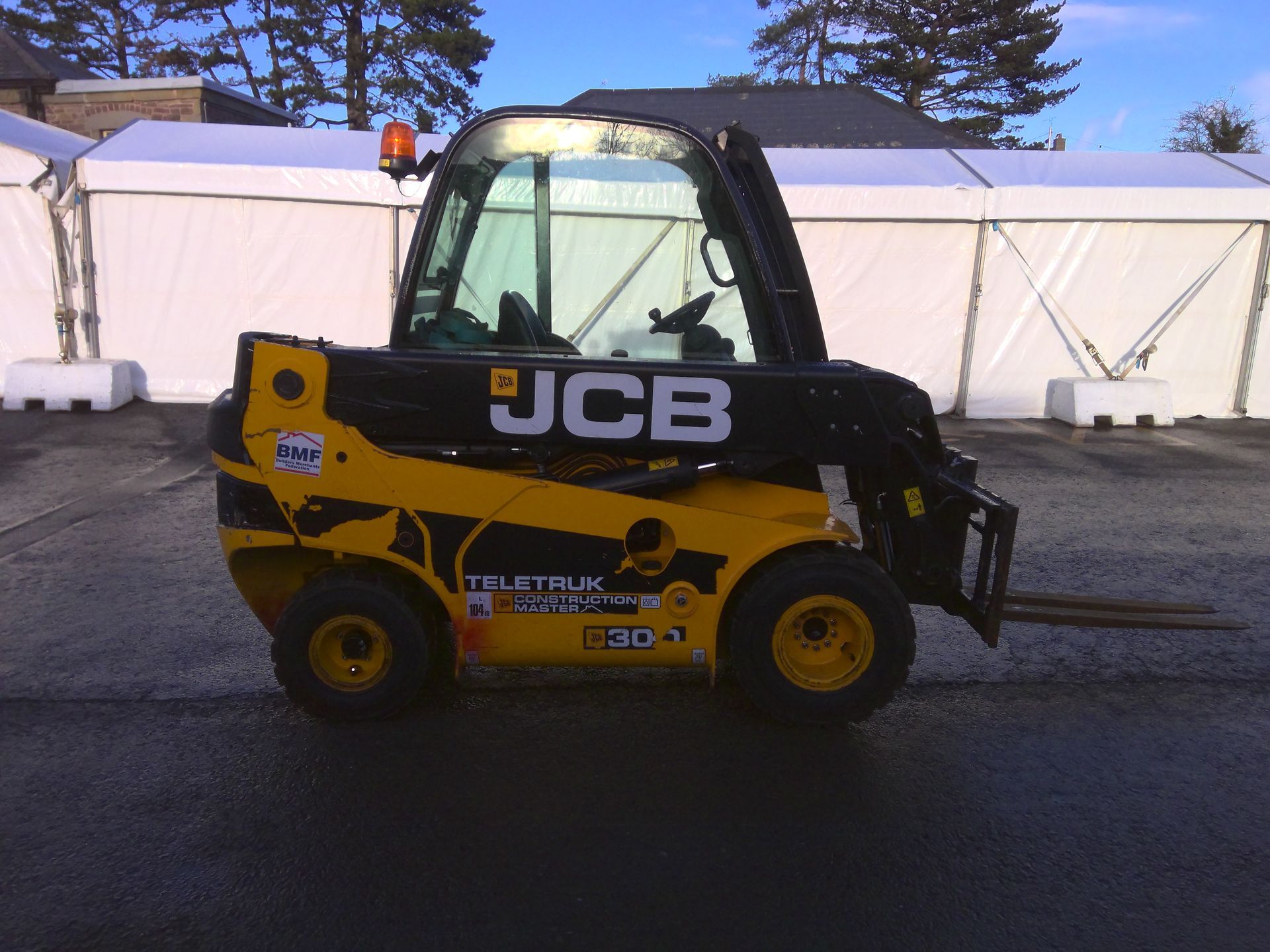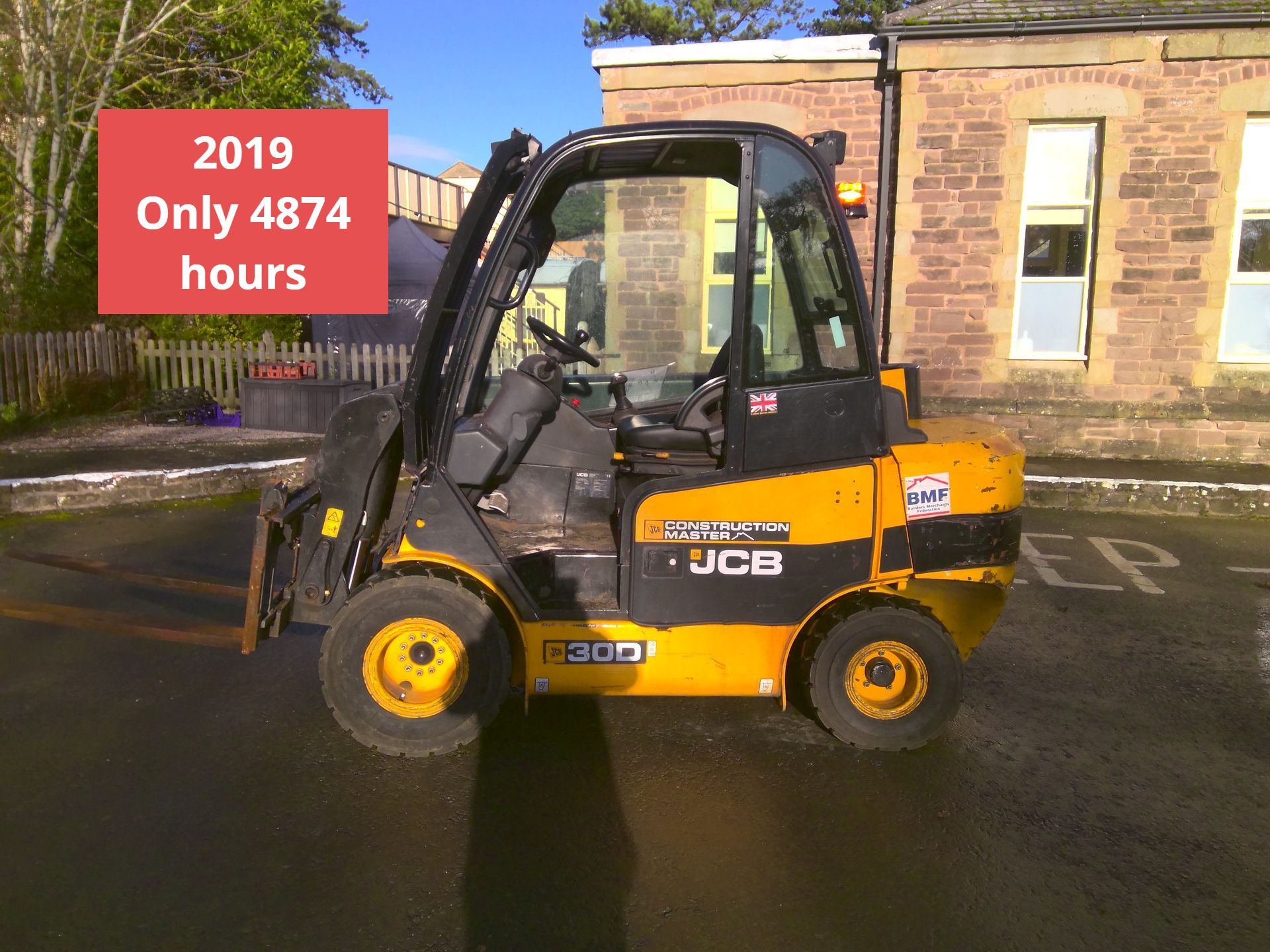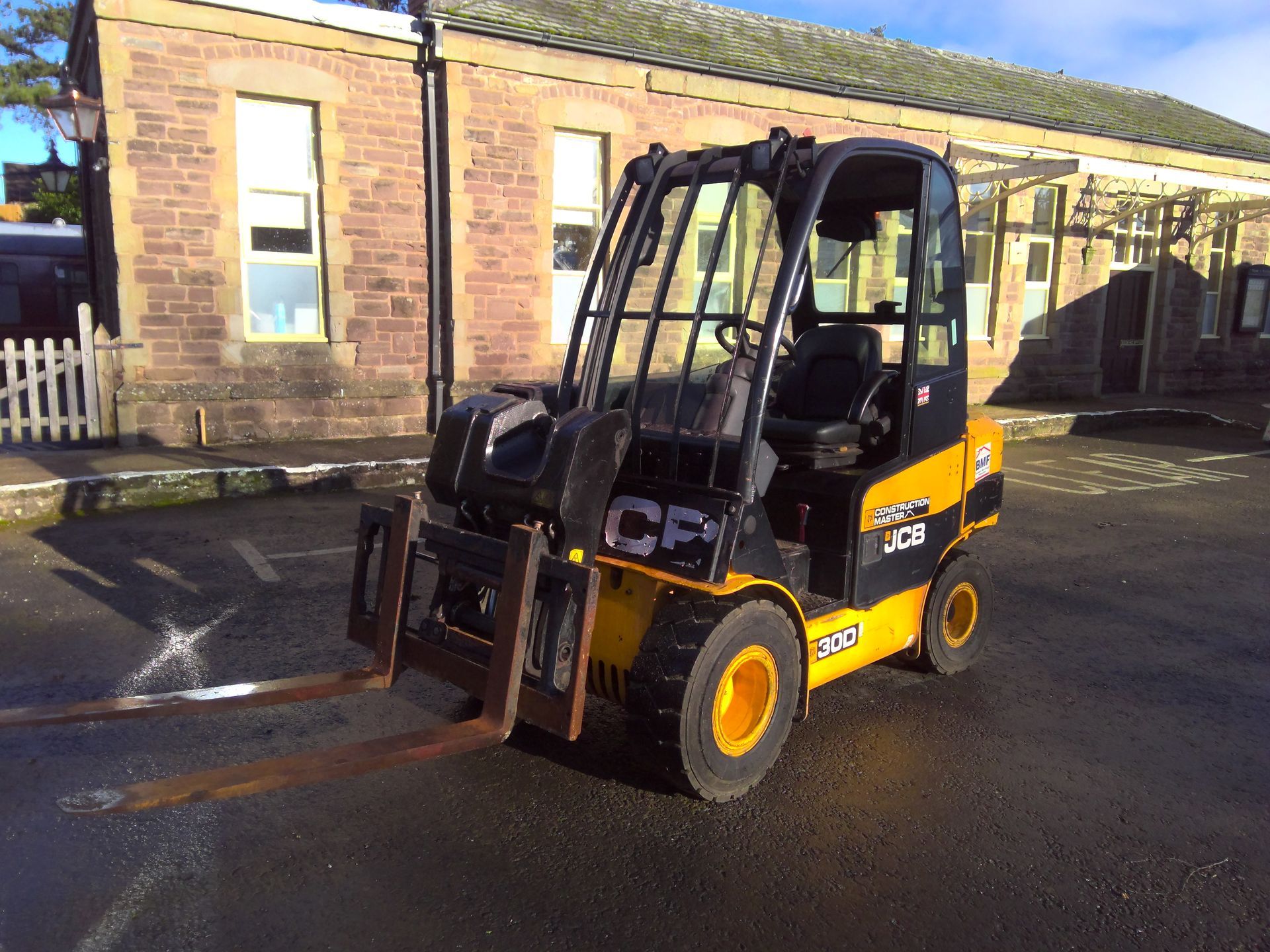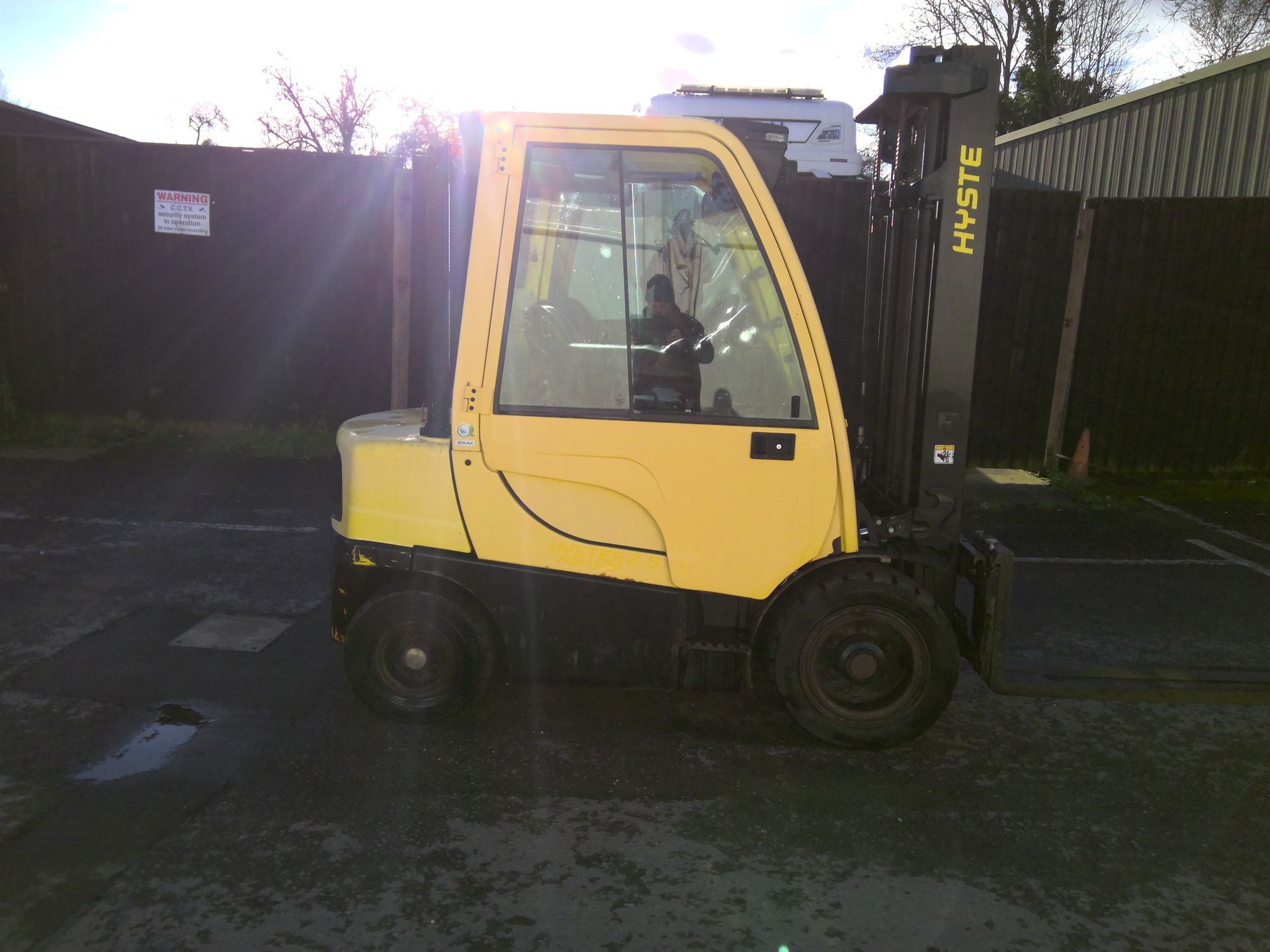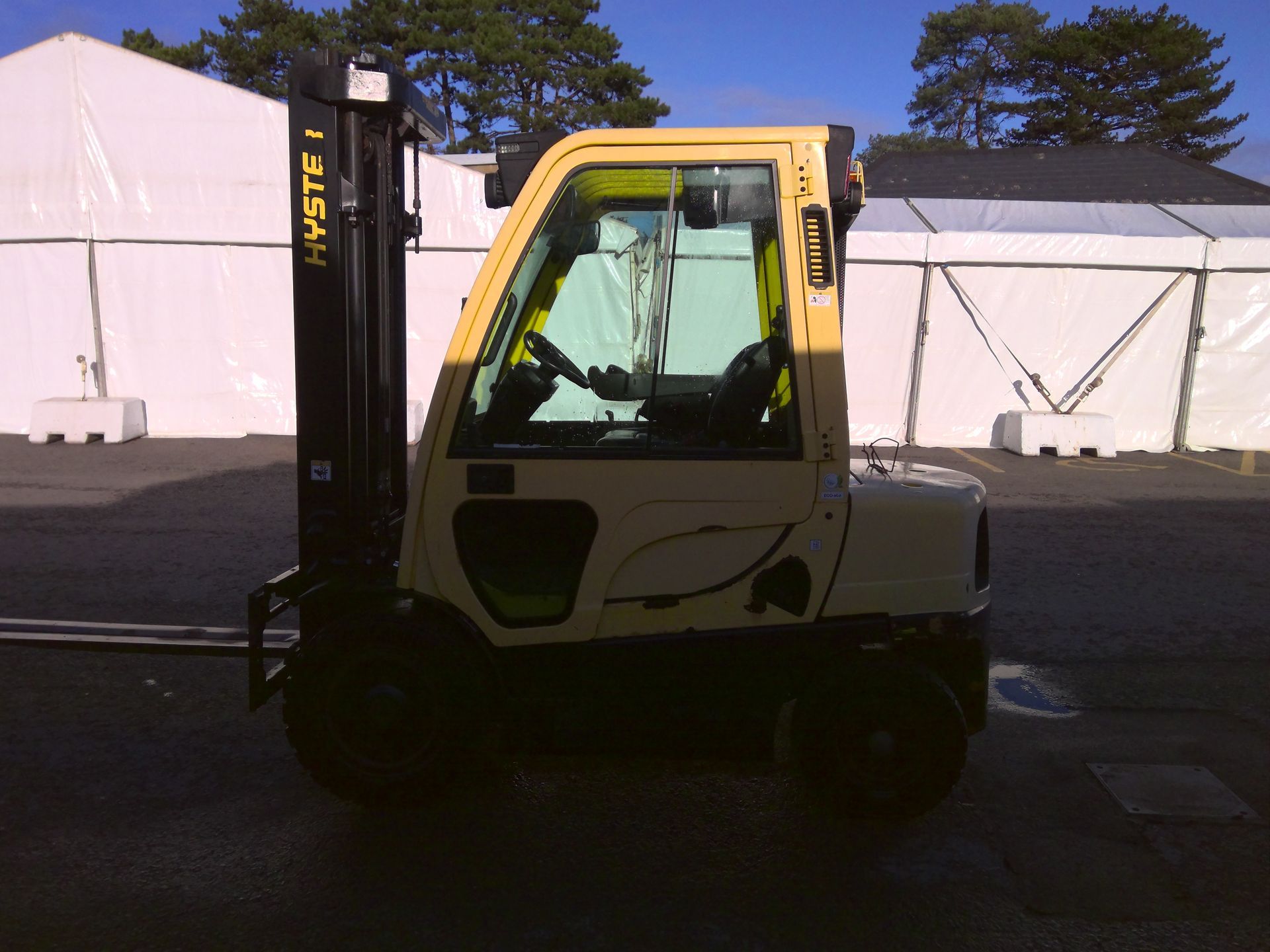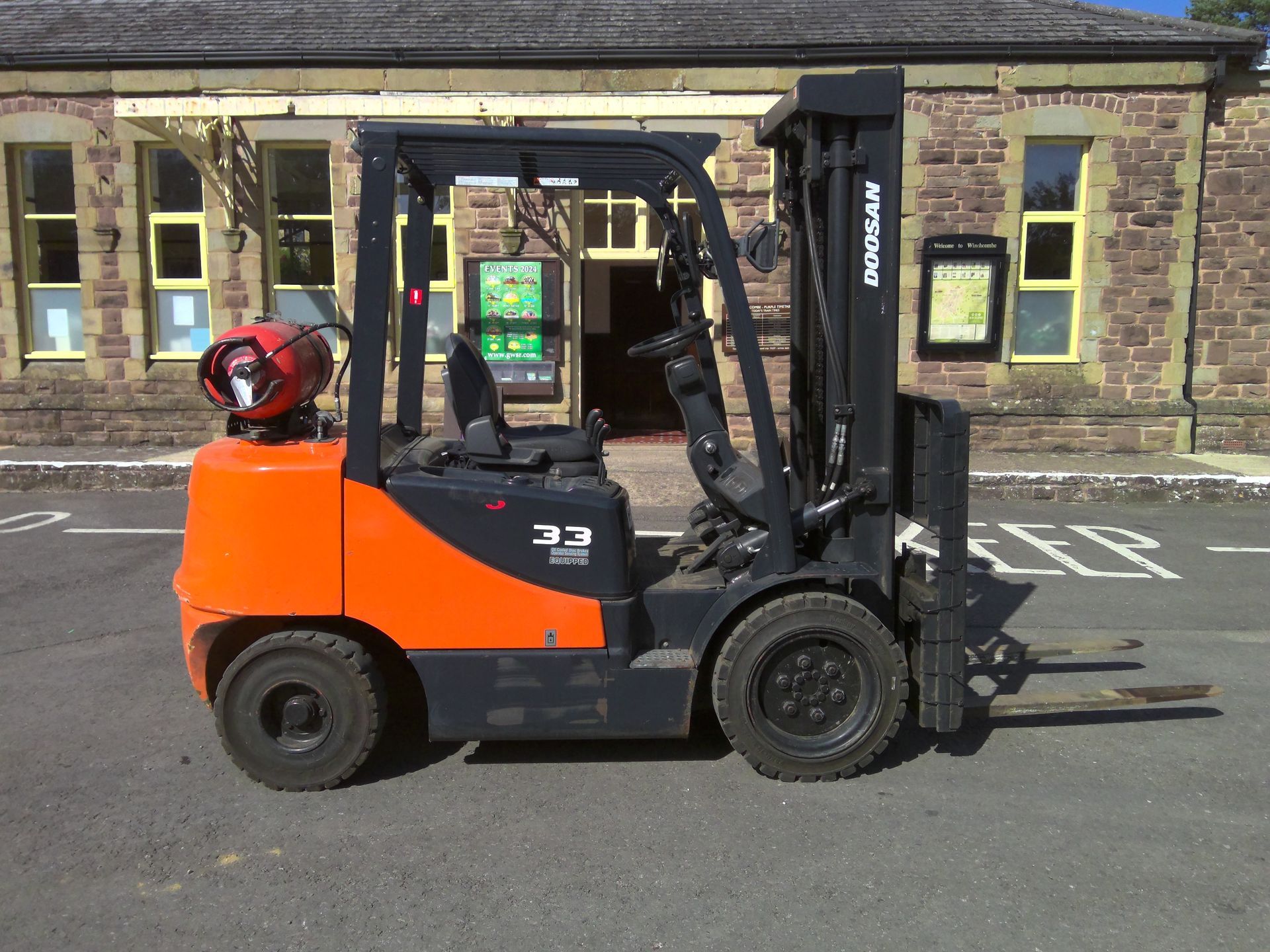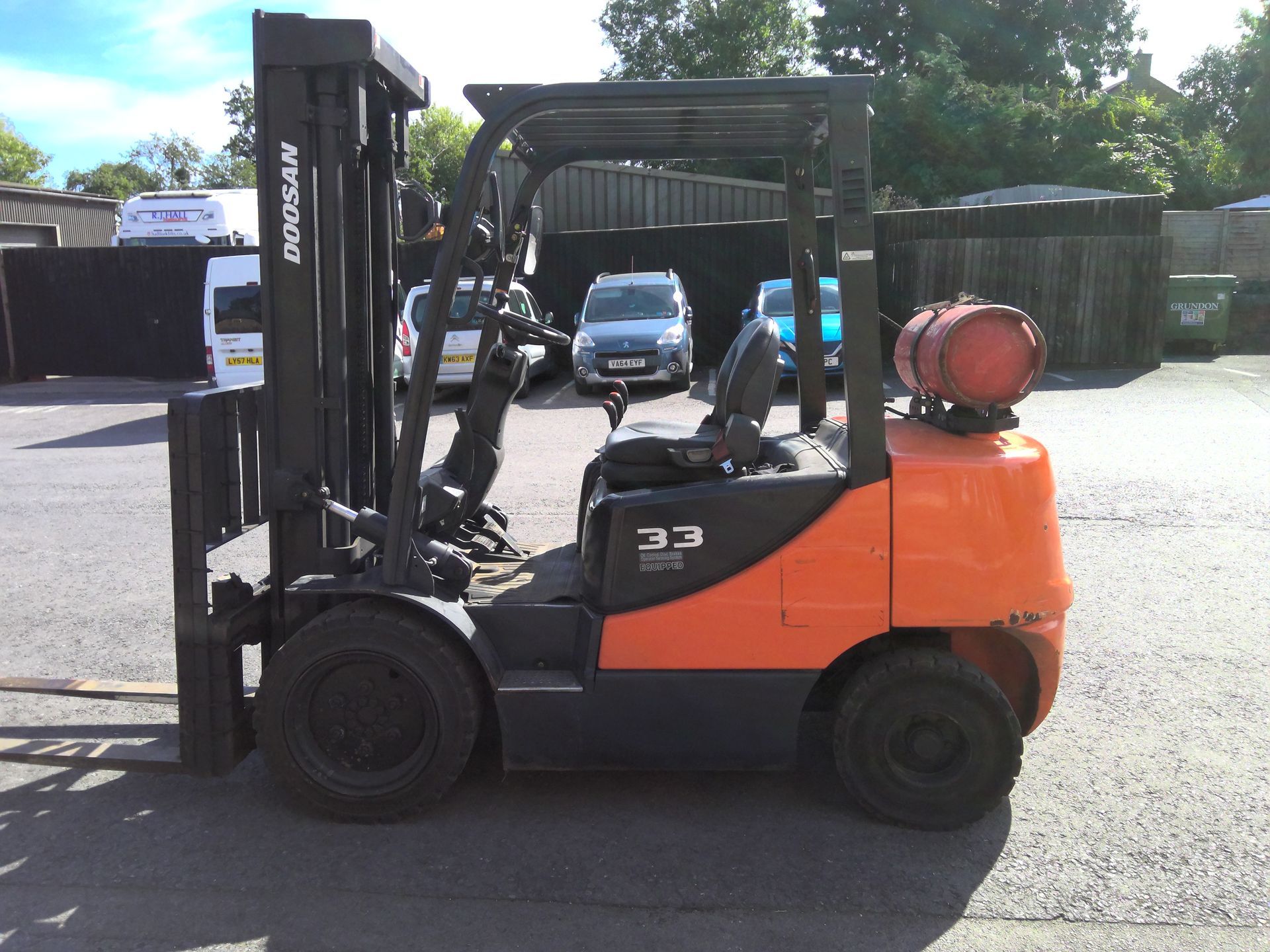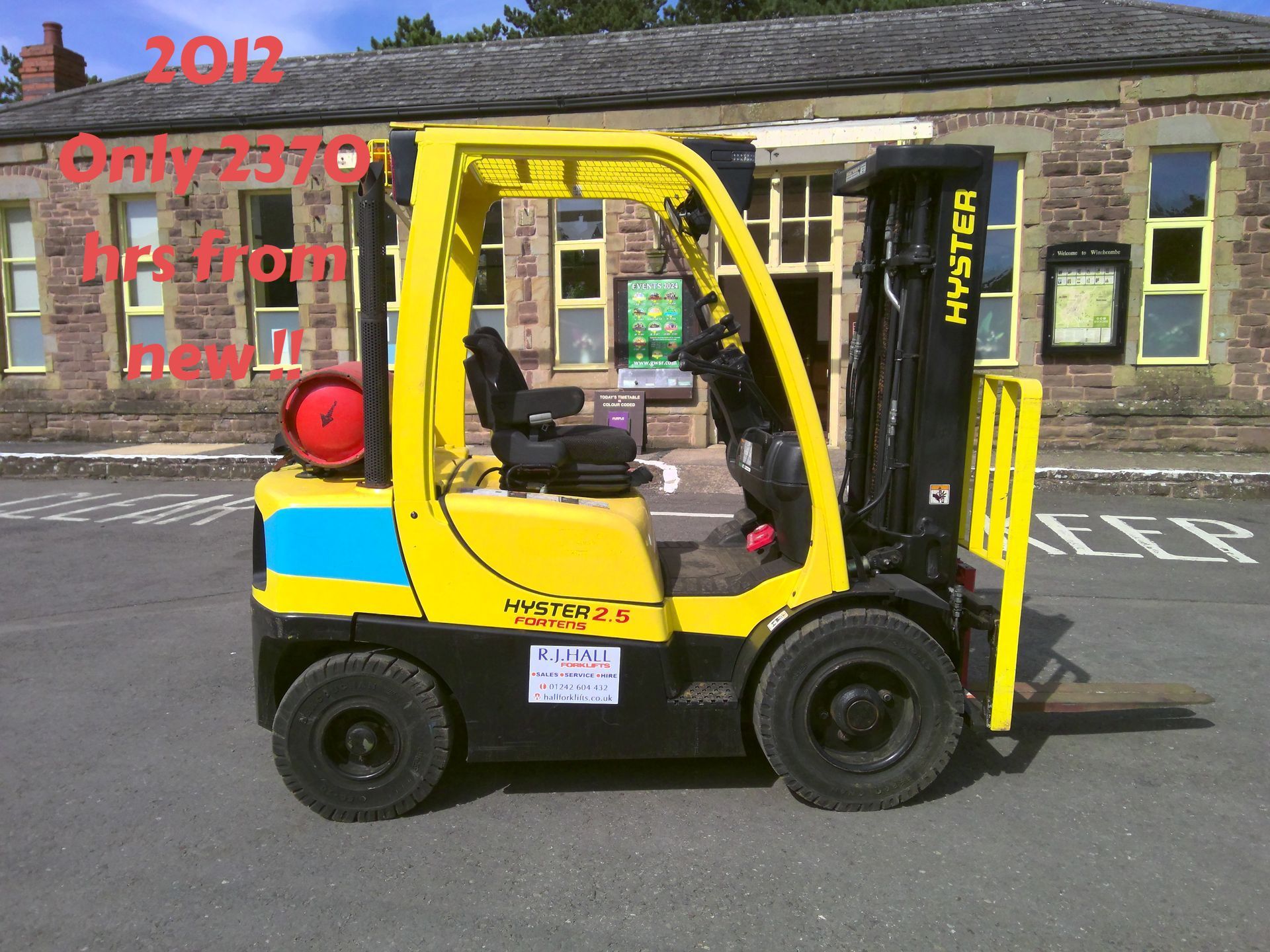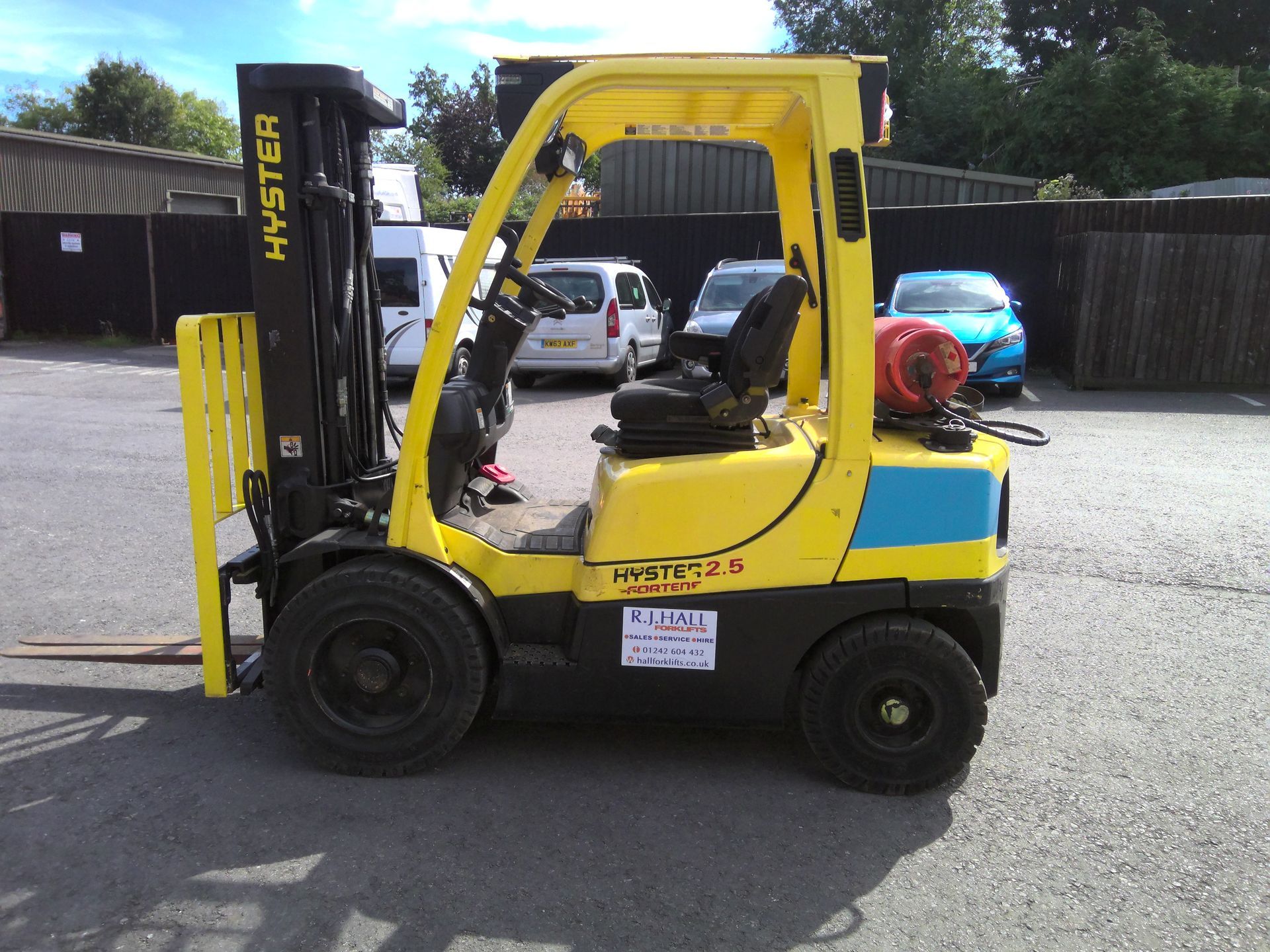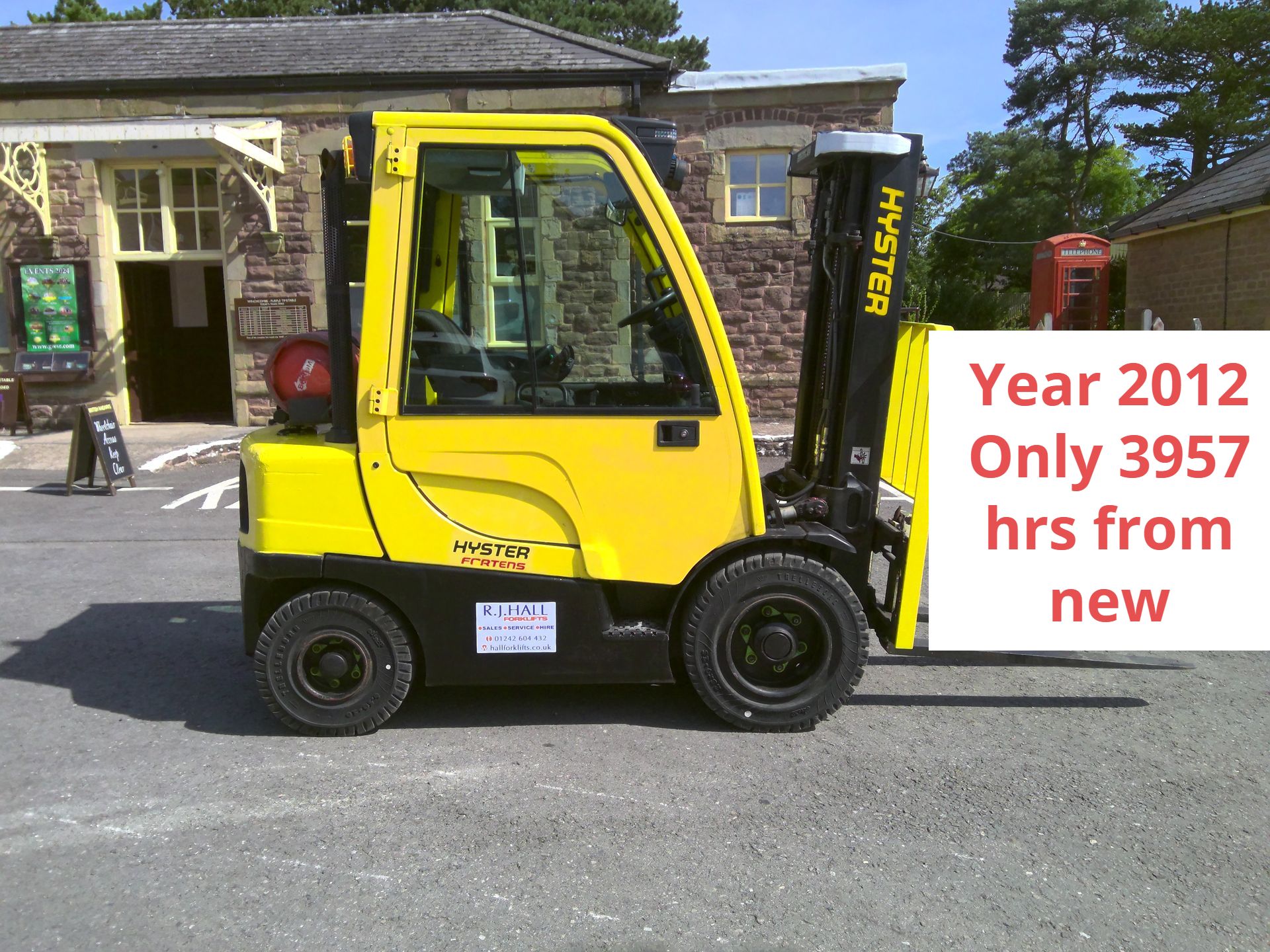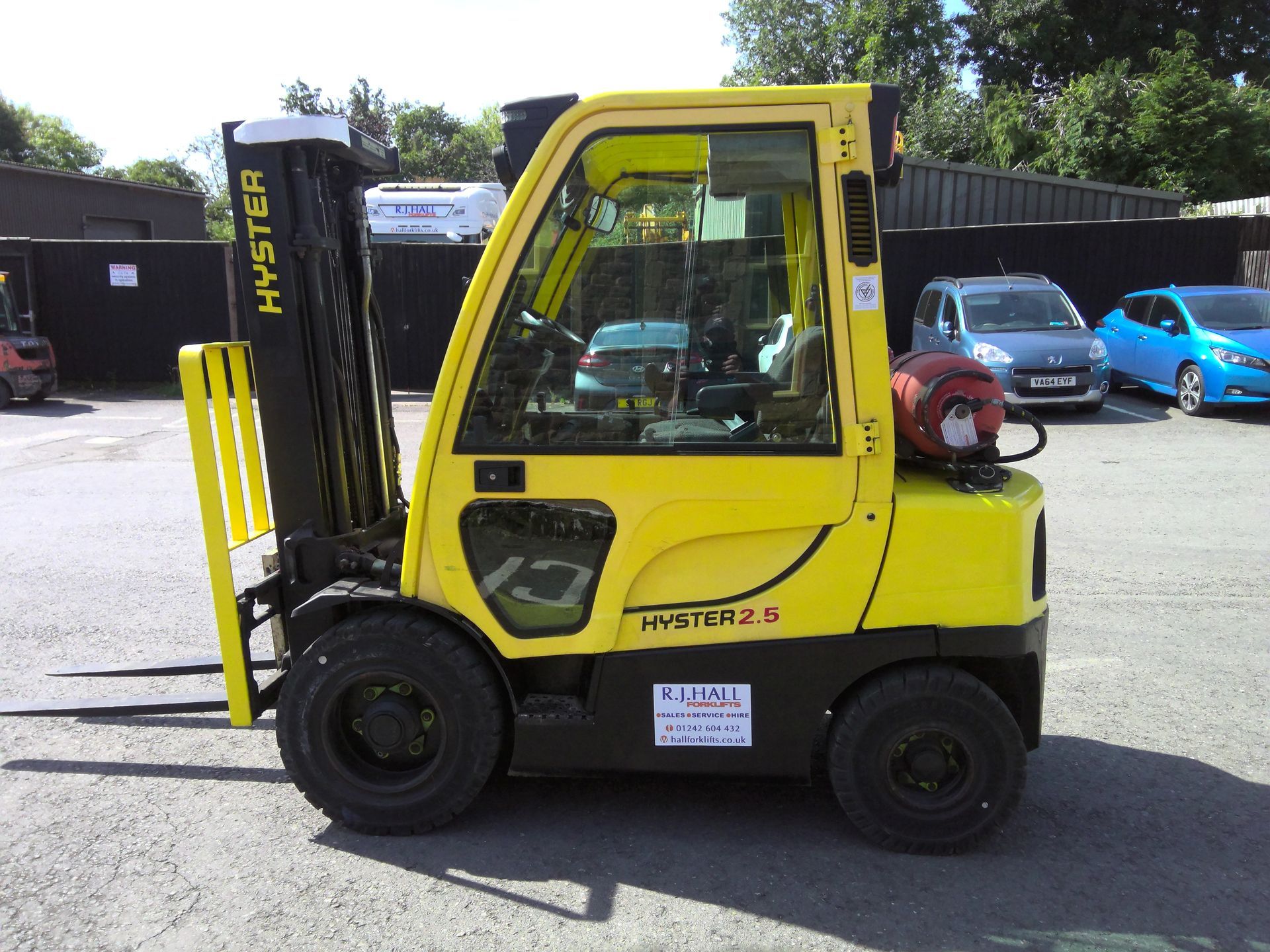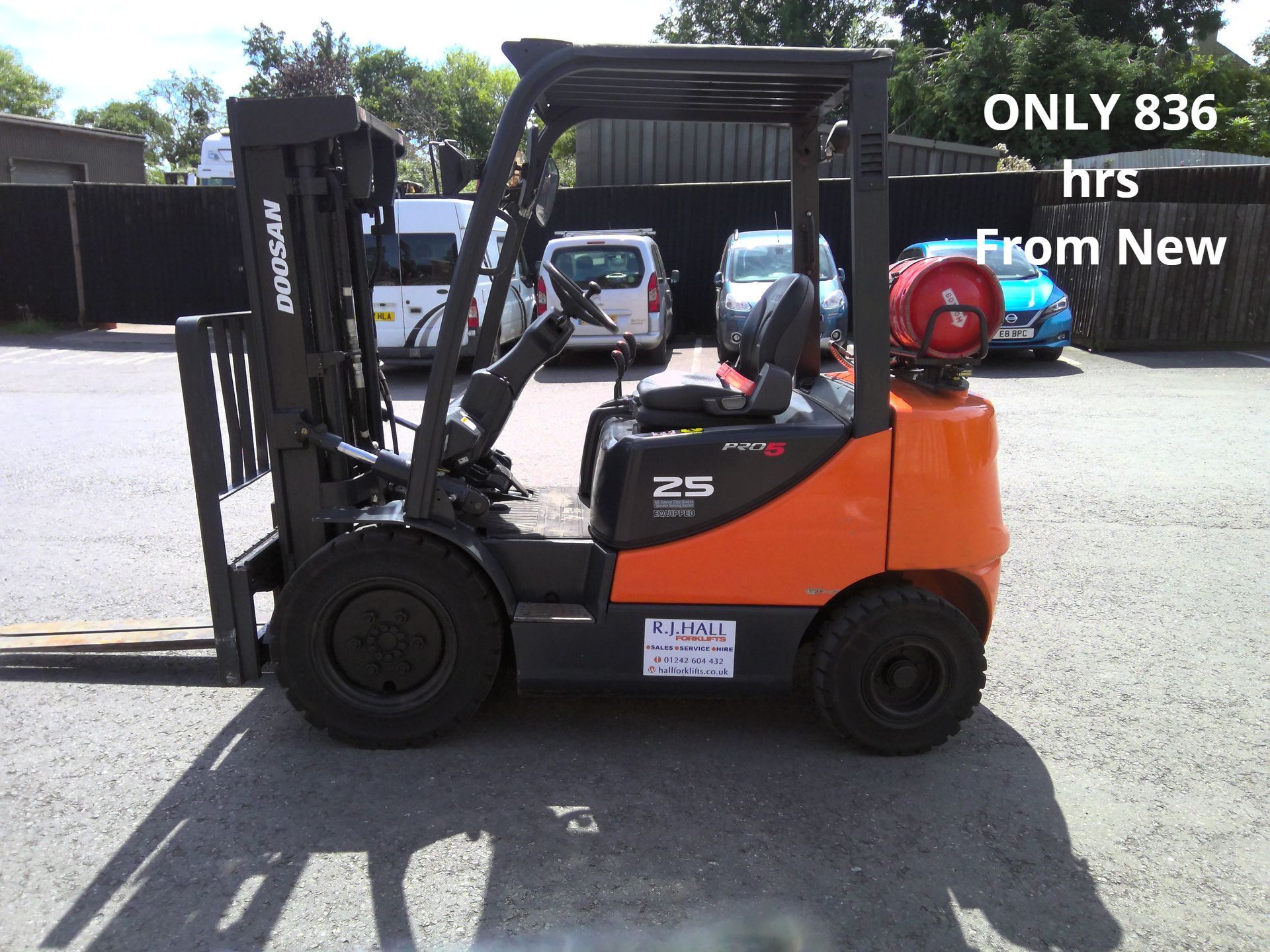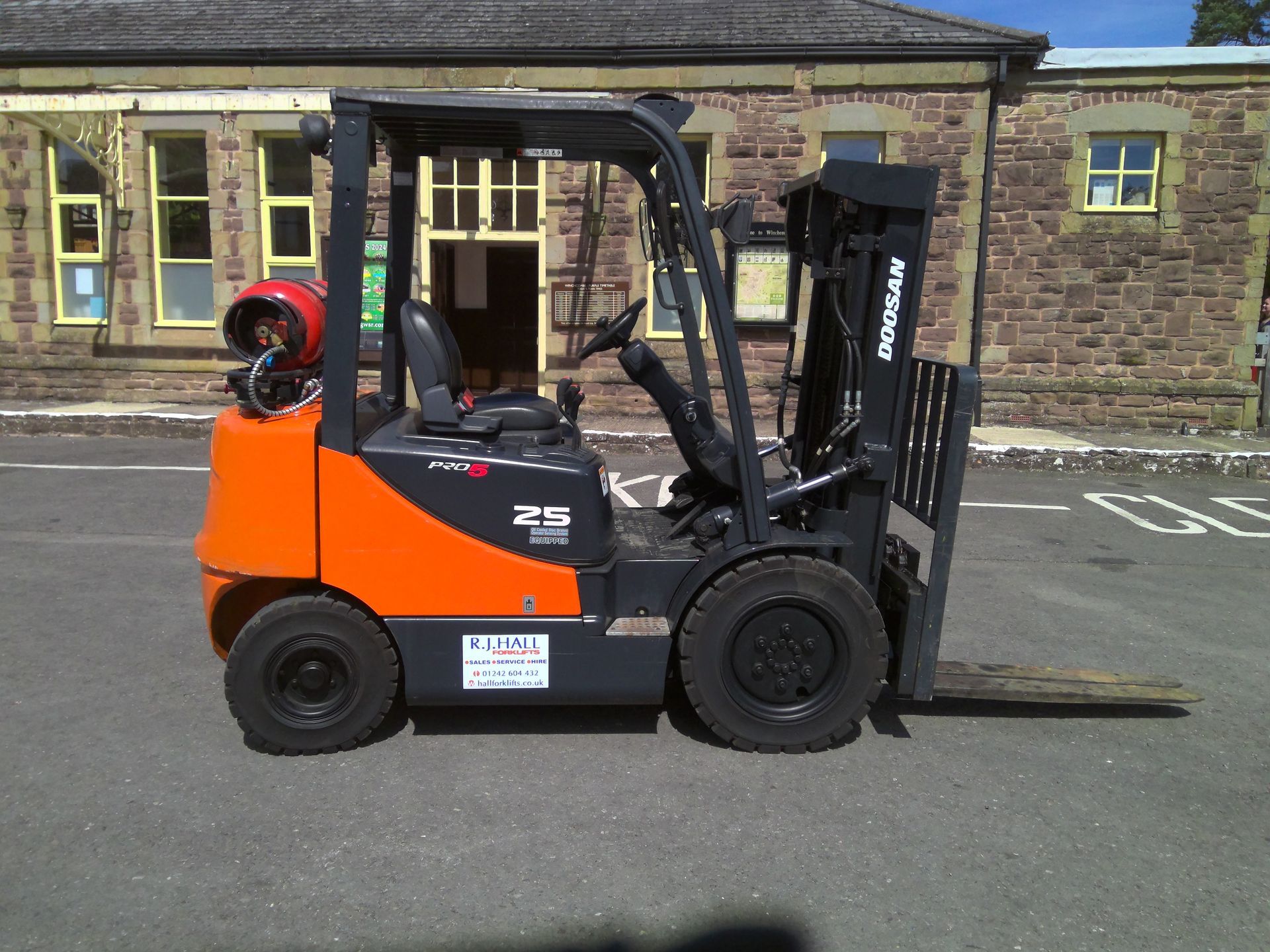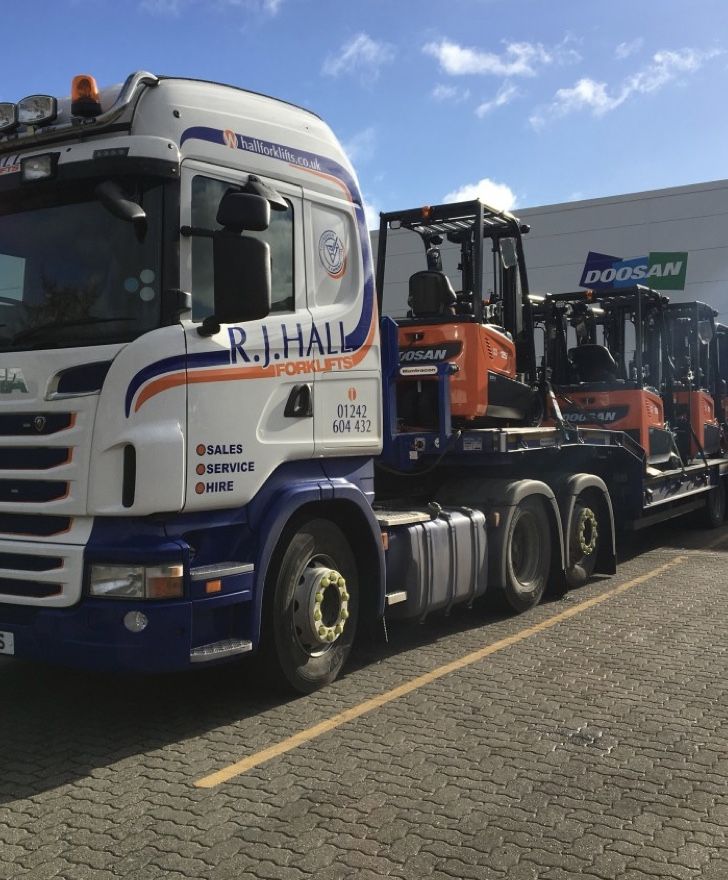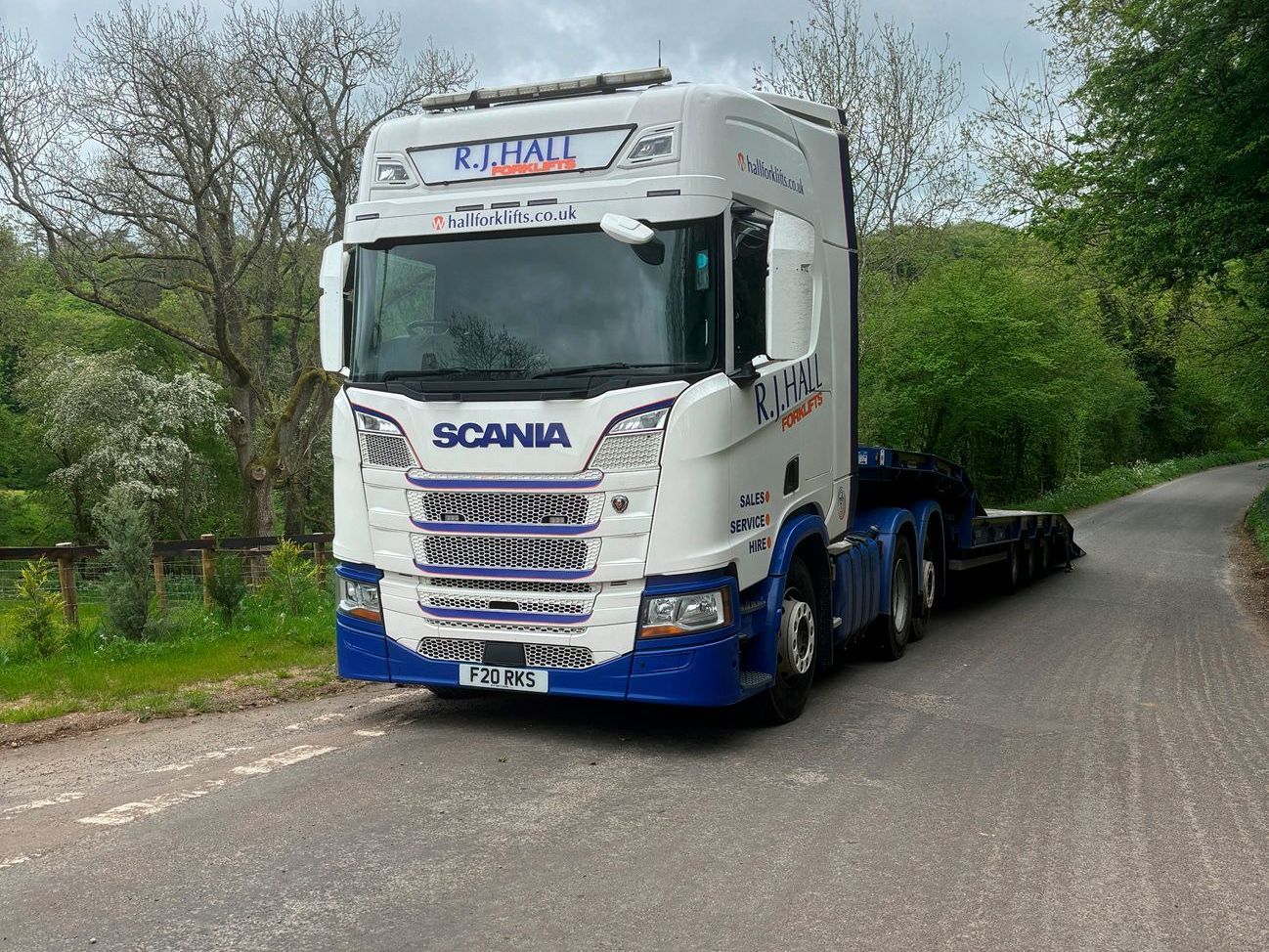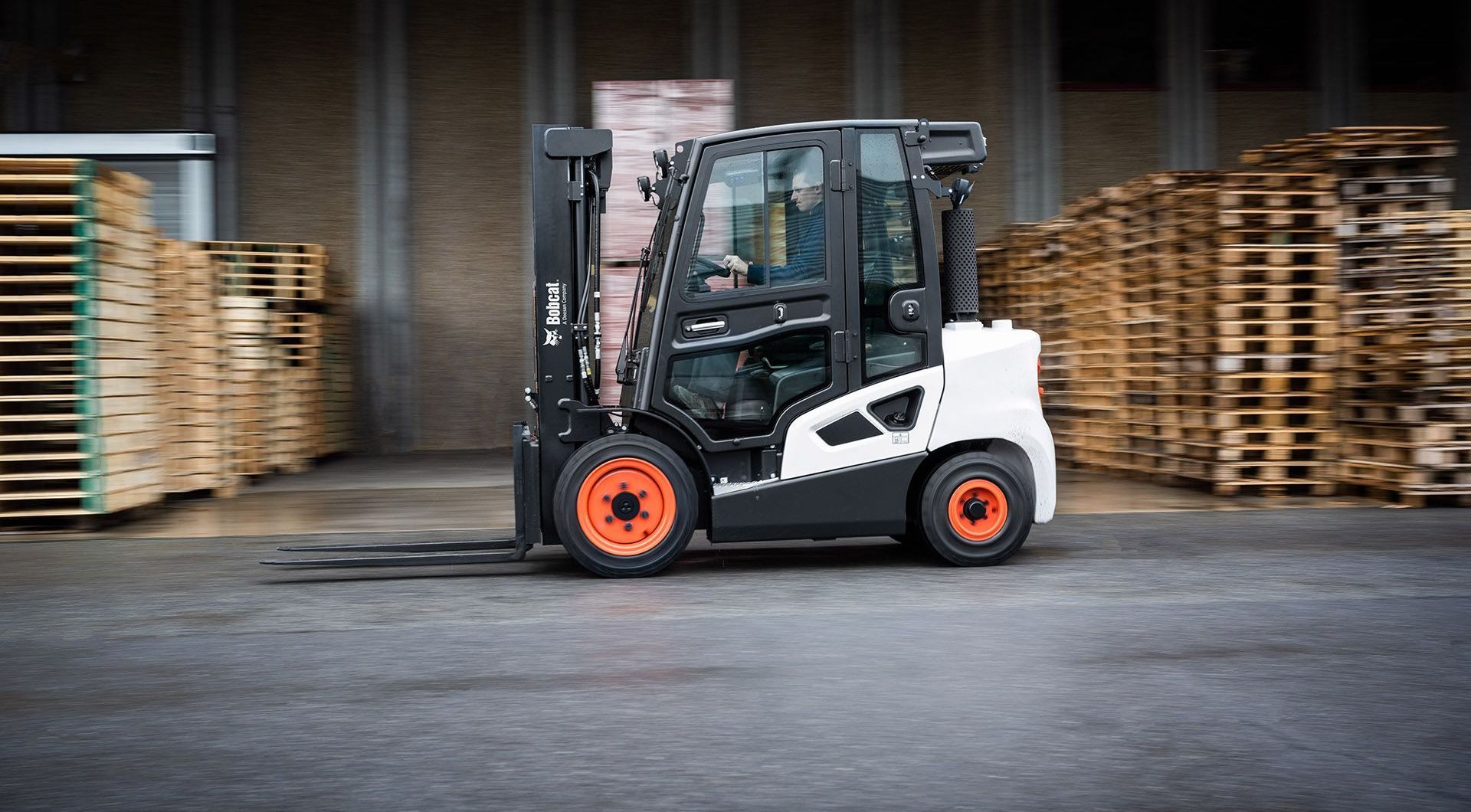Top Forklift Safety Tips: How to Stay Safe and Prevent Accidents at Work
Forklift trucks are essential for keeping things moving in warehouses, factories, and yards. But with all that power comes a need for serious care. At RJ Hall Forklifts, we believe workplace safety is everyone's job. By following the right forklift safety tips, you can protect your team, your equipment, and your day to day operations. Accidents with forklifts can be costly and dangerous.
The good news is that most of them can be avoided. With a few smart habits and the right support, you can keep your business running safely and smoothly. With over 40 years of experience since 1982, RJ Hall Forklifts provides accredited training, thorough servicing (including LOLER and PUWER inspections by CFTS accredited examiners) and flexible hire of new and used equipment across Gloucestershire, Herefordshire, Worcestershire, Warwickshire, and Oxfordshire.
These practical tips are based on what we’ve learned from helping businesses stay safe and efficient.
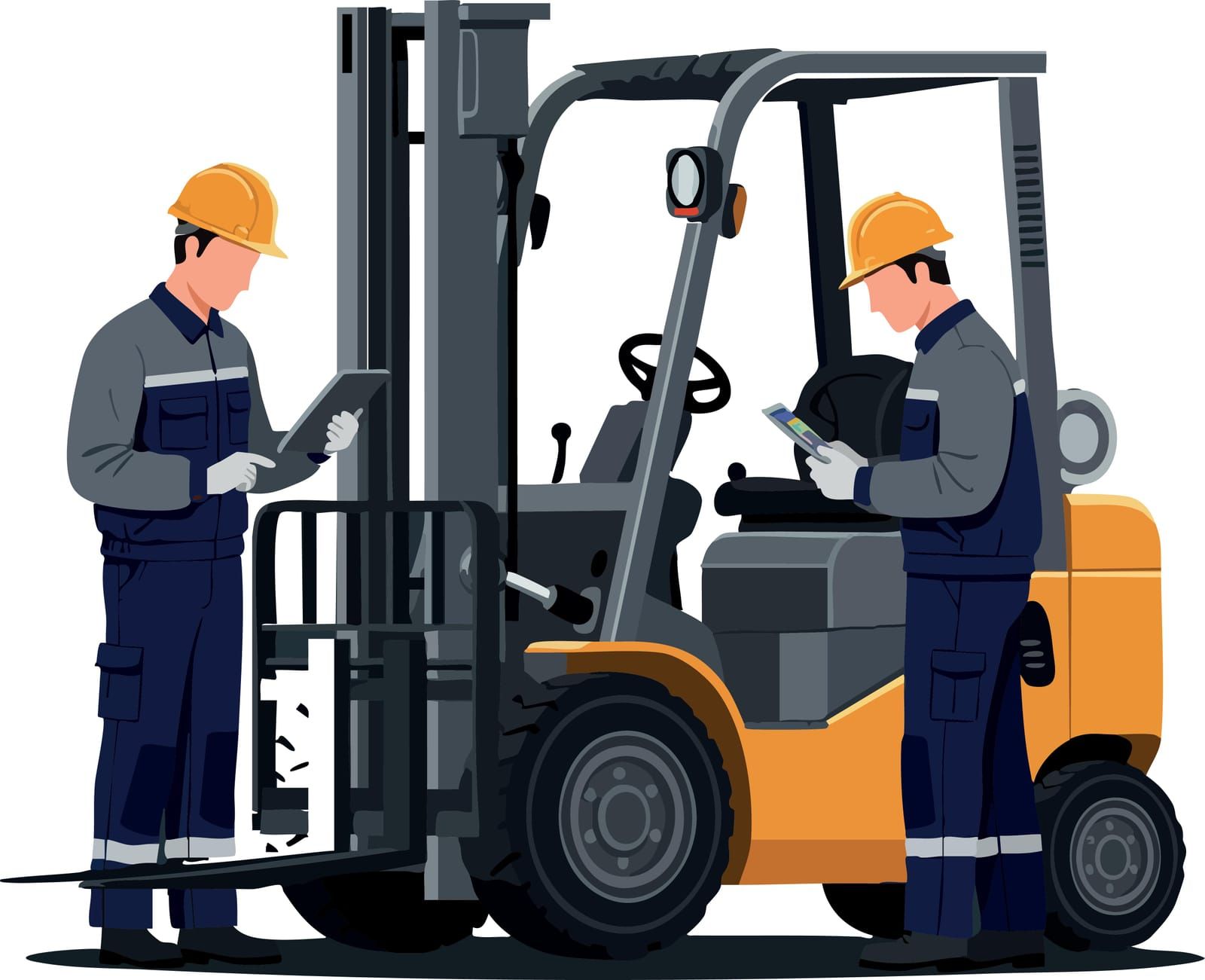
The Importance of Forklift Safety in the Workplace
Forklift safety is one of the most important aspects of running a smooth and efficient warehouse or industrial site. Forklifts play a vital role in daily operations, helping move stock, load deliveries, and maintain workflow. But when safety is not prioritised, these essential machines can become one of the biggest risks on site. That’s why investing time and effort into forklift safety pays off in more ways than one.
Accidents involving forklifts can have serious consequences. They can result in injuries to staff, damage to goods, disruption to workflow, and in some cases, legal or financial penalties. Many of these incidents are preventable, caused by poor visibility, lack of training, unserviced equipment, or simple human error. By putting strong safety measures in place, businesses can reduce the risk of accidents and protect both their team and their bottom line.
A safe environment helps staff feel more confident in their roles. Operators are more focused when they know their equipment is reliable and that clear rules are in place. Pedestrians feel safer walking through designated zones when they trust that forklift drivers are trained and following procedures. Safety improves communication and teamwork, creating a space where everyone looks out for one another.
At RJ Hall Forklifts, we believe that safety starts with the basics: clear processes, trained operators, and equipment that’s well maintained. Regular servicing, daily checks, and up-to-date training all contribute to a workplace that operates with confidence and control. And it’s not just about avoiding problems.
A strong safety culture leads to better productivity, fewer interruptions, and higher standards across the board. Good forklift safety isn’t something to tick off a list once a year. It should be built into your daily routine, from the moment the forklift is started to the end-of-shift checks. When everyone understands their role in maintaining safety, the whole workplace benefits. It becomes a space where people feel safe, equipment works as expected, and operations stay on track
Reducing Workplace Accidents with Regular Forklift Servicing
Regular forklift servicing is one of the most practical forklift safety tips we can offer. These machines work hard every day, moving heavy loads, turning through tight spaces, and coping with non-stop demands. That kind of use takes a toll.
Servicing your forklifts on a set schedule keeps vital systems in good condition. Brakes, hydraulics, tyres, lights, and warning systems all need checking often to avoid accidents. A forklift in poor condition doesn’t just slow you down. It puts everyone on site at risk.
Keeping Your Forklifts Running at Their Best
At RJ Hall Forklifts, we’ve helped many businesses set up maintenance plans that fit into their day-to-day routines. A solid plan means faults are picked up early, and small issues don’t have the chance to become big problems.
Here are just a few reasons why routine servicing plays such a key role in preventing workplace accidents:
- Identifies faults before they become dangerous. Regular checks help uncover wear and tear early, such as worn tyres, leaking hydraulics, or fading brakes. Spotting these problems before a breakdown prevents avoidable accidents and keeps operators safe.
- Supports operator confidence and performance. When drivers know their forklift is in good working order, they can focus fully on safe handling and navigation. This reduces hesitation and distractions, making the whole site safer and more efficient.
- Helps management enforce consistent safety standards. A scheduled servicing plan ensures all equipment is assessed to the same standard across shifts. It also shows that safety is a company-wide priority, encouraging staff to follow procedures and report issues without delay.
- Extends equipment life and reduces costly breakdowns. Keeping forklifts in top condition not only prevents accidents but also protects your investment. Well-maintained trucks are more reliable, require fewer emergency repairs, and stay compliant with safety regulations.
- Creates a clear safety record with maintenance logs. Documented servicing provides visibility over the condition of each forklift in your fleet. It supports risk management, improves accountability, and helps ensure only safe trucks are assigned to daily operations.
Servicing is more than a routine task. It is a daily commitment to keeping people safe, equipment reliable, and operations running without disruption. When forklifts are well maintained, teams work with greater trust, fewer delays, and a stronger safety culture across the site.
Understanding Safety Regulations for Forklift Operation
Staying compliant with forklift safety regulations is not just about ticking boxes. It’s about creating a work environment that protects people, avoids unnecessary risk, and supports smooth, efficient operations. Regulations are there to set a minimum safety standard, but when applied properly, they also help prevent accidents, reduce downtime, and improve workplace morale.
Forklift regulations in the UK are managed by the Health and Safety Executive (HSE) and are covered under laws such as PUWER (Provision and Use of Work Equipment Regulations) and LOLER (Lifting Operations and Lifting Equipment Regulations). These rules apply to all aspects of forklift use, including equipment condition, staff training, load handling, and site layout. Whether your site is small or spread across multiple locations, these regulations apply equally and must be followed consistently.
At RJ Hall Forklifts, we help businesses stay on top of these requirements. That includes offering ITSSAR-accredited training to meet operator certification needs and CFTS-accredited servicing to support LOLER compliance. Keeping forklifts in good working order is a legal requirement, but it also builds trust with your team and shows you take their safety seriously.
Understanding regulations also helps managers set the right expectations and enforce consistent procedures.
When your team knows what is required and why it matters, they are more likely to follow best practices and flag concerns. For example, setting clear rules about speed limits, loading zones, and pedestrian crossings can significantly reduce site hazards.
It’s also important to keep up with updates. Regulatory guidance can change in response to new risks, industry feedback, or advances in equipment. By reviewing your procedures regularly and working with trusted partners like RJ Hall Forklifts, you can make sure your site is always aligned with current standards.
When safety regulations are fully understood and applied as part of daily operations, they stop being a burden and start becoming a benefit. They give structure to your processes, reduce uncertainty, and create a safer, more professional environment for everyone on site.
How to Keep Up to Date with Local and National Forklift Safety Regulations
Keeping up with forklift safety regulations is essential for protecting your workforce and staying compliant with the law. These rules can evolve due to new risks, advances in equipment, or changes in national guidance.
Taking a few simple steps can help you stay informed and ensure your site remains safe and well managed.
- Assign a dedicated person or team to monitor safety updates. Designate someone within your business to stay on top of regulatory changes. This could be a health and safety officer or a manager who regularly checks updates from the Health and Safety Executive (HSE), local authorities, or recognised trade bodies. Having a clear point of contact reduces the risk of missing critical changes. It also ensures someone is responsible for sharing updates across the team.
- Include regulation reviews in regular training sessions. Use refresher training as an opportunity to go over any new or updated safety regulations. This helps reinforce knowledge for current operators and introduces new information in a clear, structured way. Training sessions also create space for questions and feedback from staff. Keeping training up to date shows your commitment to continuous improvement and compliance.
- Subscribe to trusted industry newsletters and bulletins. Signing up for newsletters from organisations like the FLTA or HSE is an easy way to stay informed. These updates often include summaries of regulation changes, safety tips, and insights from industry professionals. They can be shared with team members or used during toolbox talks. Staying connected to the wider forklift community helps keep your practices current.
- Review and update your on-site safety procedures and signage — When safety rules change, your documentation and physical signage should be updated to match. Make sure checklists, warning signs, and control measures reflect the most current regulations. Display updates in visible areas like break rooms or noticeboards so staff are always aware. Regular reviews also help you identify and fix any gaps in compliance.
- Use your forklift service provider as a reliable source of advice — Working with a provider like RJ Hall Forklifts means you have ongoing access to regulatory guidance. Our team shares updates during servicing visits and training, helping you stay aligned with the latest requirements. We can also advise on how new rules apply to your equipment or site layout. Having expert support on hand takes the stress out of compliance and helps you act quickly when rules change.
By following these steps, you can stay ahead of safety updates and keep your site in line with both local and national expectations. This approach builds confidence, improves
accountability, and reduces the risk of avoidable issues.
Proper forklift training is one of the most effective ways to reduce accidents and promote a safe, confident team. It goes beyond learning how to drive the truck. Good training teaches operators how to identify hazards, follow procedures, and make sound decisions under pressure. These skills are critical for preventing incidents in busy, high-risk environments like warehouses and yards.
Without proper training, even experienced operators may overlook essential safety steps, such as checking load weight, maintaining safe speeds, or reacting appropriately to blind spots. Mistakes like these can lead to serious injuries, damage to stock, and costly downtime. That’s why training needs to be thorough, up to date, and relevant to each site.
At RJ Hall Forklifts, we provide
ITSSAR-accredited training for both new and experienced operators. Our courses cover everything from basic controls to site-specific risks, ensuring your team is fully prepared for the demands of the job. We also support ongoing learning with refresher sessions and practical assessments.
When your operators are well trained, they work more safely, make better decisions, and help build a strong safety culture across the site. Investing in training is not only a legal requirement, it is a smart way to protect your people, your equipment, and your business.
The Role of Qualified Instructors in Effective Forklift Training
Qualified instructors play a vital role in creating safer forklift operations. Their expertise goes far beyond basic instruction, helping both operators and management build confidence, reduce risks, and stay compliant with current regulations.
- They bring real-world experience into every session Qualified instructors understand the challenges operators face on site. They use practical examples to explain rules and techniques, making the training more relevant and easier to apply.
- They tailor training to match your environment
Every site is different, and experienced instructors adjust their lessons based on your layout, equipment, and typical tasks. This personalised approach helps operators prepare for real scenarios, not just textbook ones. - They help reinforce safety culture across the team
Good instructors promote awareness, accountability, and open communication. They encourage operators to take safety seriously and work with management to address gaps in procedures. - They keep training aligned with the latest regulations Instructors stay current with legal requirements, including updates from the HSE. This ensures your team is not only trained to do the job but also prepared to meet compliance expectations.
- They support ongoing improvement through refresher sessions
Skills can fade over time, so instructors provide regular assessments and practical refreshers. These sessions help maintain high standards and address any unsafe habits before they become problems.
Having skilled, qualified instructors on your side makes forklift training more effective, more engaging, and more impactful in the long term.
Every forklift operator has a responsibility to keep themselves and others safe while working. A few consistent habits, followed daily, can make a huge difference in preventing workplace accidents. Whether it’s checking the condition of the truck, sticking to site speed limits, or handling loads properly, small steps lead to safer outcomes.
One of the most important habits is carrying out a proper pre-use inspection. Operators should check for visible damage, test brakes, lights, and alarms, and confirm fluid levels before starting work. If anything is wrong, the forklift should be taken out of use and reported immediately.
Sticking to designated speed zones is also essential. Even if the forklift is in perfect condition, excessive speed can lead to loss of control, especially in high-traffic areas or tight spaces.
Operators should always drive with caution, particularly near pedestrians or blind spots.
Safe load handling is another key practice. Operators must ensure loads are stable, within weight limits, and properly secured before lifting or moving. Rushing through this step can result in dropped goods, damage, or injury.
By building these simple routines into every shift, operators help reduce risks and support a stronger safety culture. With the right training and awareness, safer forklift operation becomes second nature.
Daily Safety Checks and Maintenance to Keep Forklifts Safe
Daily safety checks are essential for spotting issues early and keeping everyone on site safe. A forklift might look fine at first glance, but without proper checks, hidden faults can go unnoticed. These inspections should be a non-negotiable part of every operator’s routine.
Here are key checks every operator should complete before using a forklift:
- Start with a full walkaround inspection
Check for visible damage like oil leaks, cracked forks, worn tyres, or loose guards. This helps identify any obvious safety issues before the forklift is started. - Test essential controls and safety systems
Ensure that steering, brakes, lights, horns, and alarms are all working correctly. Faulty controls or warning systems can lead to serious accidents, especially in high-traffic areas. - Check fluid levels and battery charge
Make sure fuel, coolant, and hydraulic fluids are topped up to safe levels. Low fluids can affect performance and increase the risk of mid-shift breakdowns.
Inspect forks, mast, and load handling gear
Confirm that forks are not bent or cracked and that the mast operates smoothly. Damaged lifting components can compromise load stability and safety. - Log any findings and report faults immediately
Use a checklist to record checks and highlight anything that needs attention. If a fault is found, the forklift should be taken out of service until it's been repaired.
These daily checks keep your forklift reliable, your site safer, and your team more confident. Making them routine helps prevent accidents and reduces costly downtime.
A safe working environment around forklifts doesn’t happen by chance. It takes planning, clear procedures, and a commitment from everyone on site. Forklift-related risks can be greatly reduced by designing spaces that separate pedestrians from moving equipment and by ensuring everyone understands how to work safely within those spaces.
Safe zones should be clearly marked with high-visibility paint and signage that shows where pedestrians can walk and where forklifts operate. These zones help prevent confusion, especially in busy areas like loading bays or intersections. Signs, floor markings, and barriers should be checked regularly to make sure they’re still visible and in good condition.
Management plays a key role in maintaining this environment. Regular safety audits, toolbox talks, and reminders about blind spots and pedestrian crossings help reinforce awareness. Operators should be encouraged to drive cautiously, use their horn in low-visibility areas, and stay alert to unexpected foot traffic.
Technology like warning lights, motion sensors, and floor-projected safety lights can also add another layer of awareness. But ultimately, safety comes down to people making good decisions every day.
When everyone respects the layout, follows the rules, and stays aware of their surroundings, forklift operations become safer and more efficient for the whole team.
Implementing Safe Zones and Pedestrian Awareness for Improved Safety
Creating a safe work environment means making sure both operators and pedestrians understand how to move safely within shared spaces. Clear safe zones, consistent training, and regular communication all work together to reduce the risk of accidents around forklifts. Here are some key ways to improve safety through better site layout and pedestrian awareness:
- Mark clear, high-visibility safe zones throughout the site
Use paint, signage, and physical barriers to separate forklift paths from pedestrian walkways. These markings should be easy to understand and maintained regularly to stay effective. - Train both drivers and pedestrians on how to use shared spaces Operators should be taught to slow down near crossings and use their horn at blind spots. Pedestrians should understand the dangers of cutting through forklift routes and always wear high-visibility clothing.
- Place warning systems in high-risk areas
Use flashing lights, alarms, and floor projection systems near intersections or loading bays. These tools alert both pedestrians and drivers to each other’s presence, improving reaction time and awareness. - Review and update safe zones as operations change
If the warehouse layout or traffic flow shifts, revise pedestrian routes and signage accordingly. Regular reviews ensure your site remains safe and easy to navigate. - Encourage a culture of communication and reporting
Everyone on site should feel comfortable raising safety concerns or suggesting improvements. A shared sense of responsibility helps prevent accidents before they happen.
By combining clear markings, proper training, and a proactive approach, businesses can make forklift and pedestrian interactions far safer and more controlled..
Keep Your Team Safe with Trusted Forklift Support
Safety starts with the right partner. At RJ Hall Forklifts, we provide expert training, reliable servicing, and a wide range of forklift solutions to keep your site running smoothly. Whether you need operator courses, thorough examinations, short-term hire, or long-term equipment support, our experienced team is here to help.
Get in touch today to book accredited training, schedule a service, or find the right forklift for your business. We’re proud to support safe, efficient operations across Gloucestershire, Herefordshire, Worcestershire, Warwickshire, and Oxfordshire.
We carry a large stock of new and used parts for a wide range of vehicles. Please telephone us on 01242 604432 to help us source any specific parts that your require, or fill in the form below to send us your enquiry.
If you have any questions on our Services or Thorough Examinations, then please don’t hesitate to contact us to discuss.



